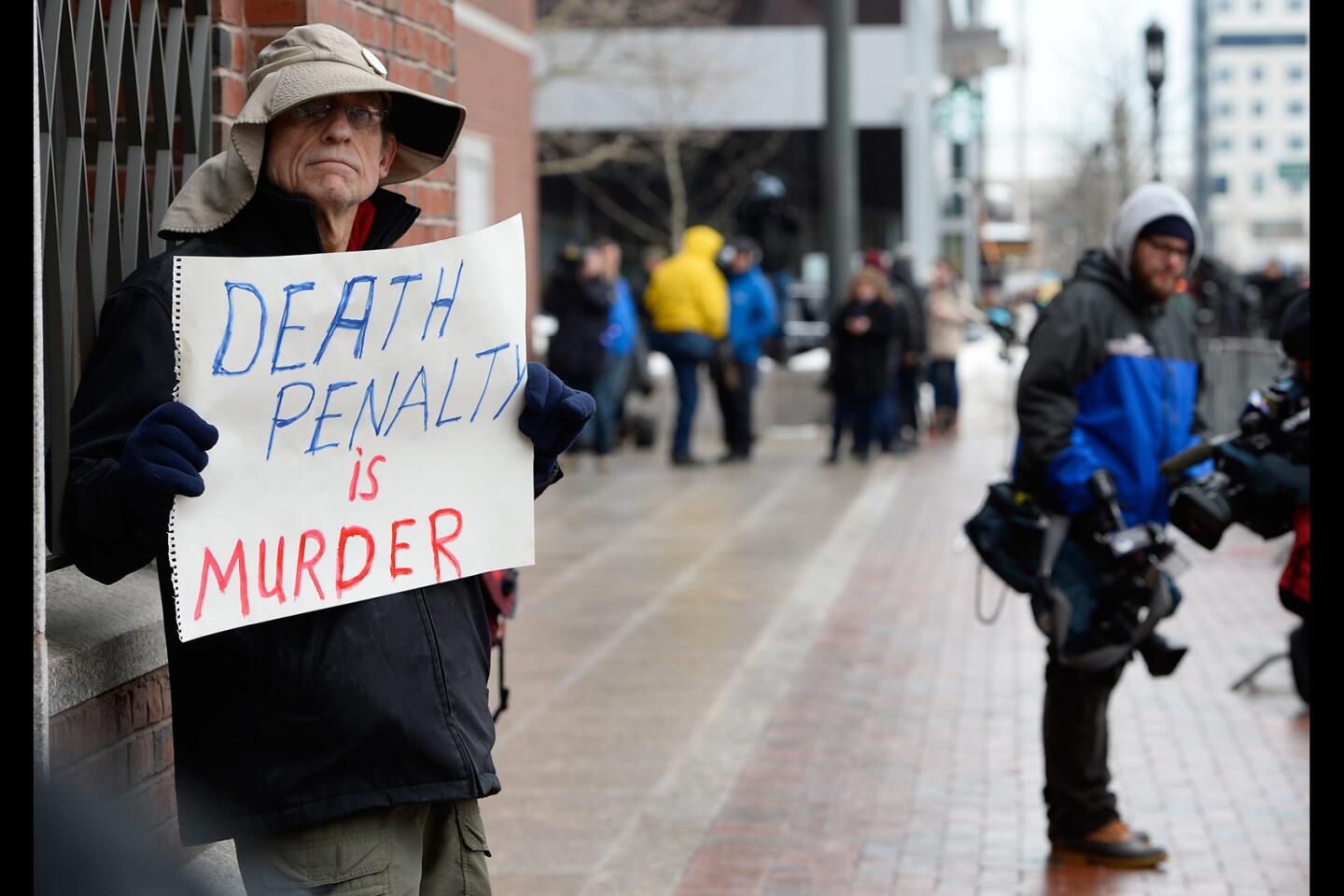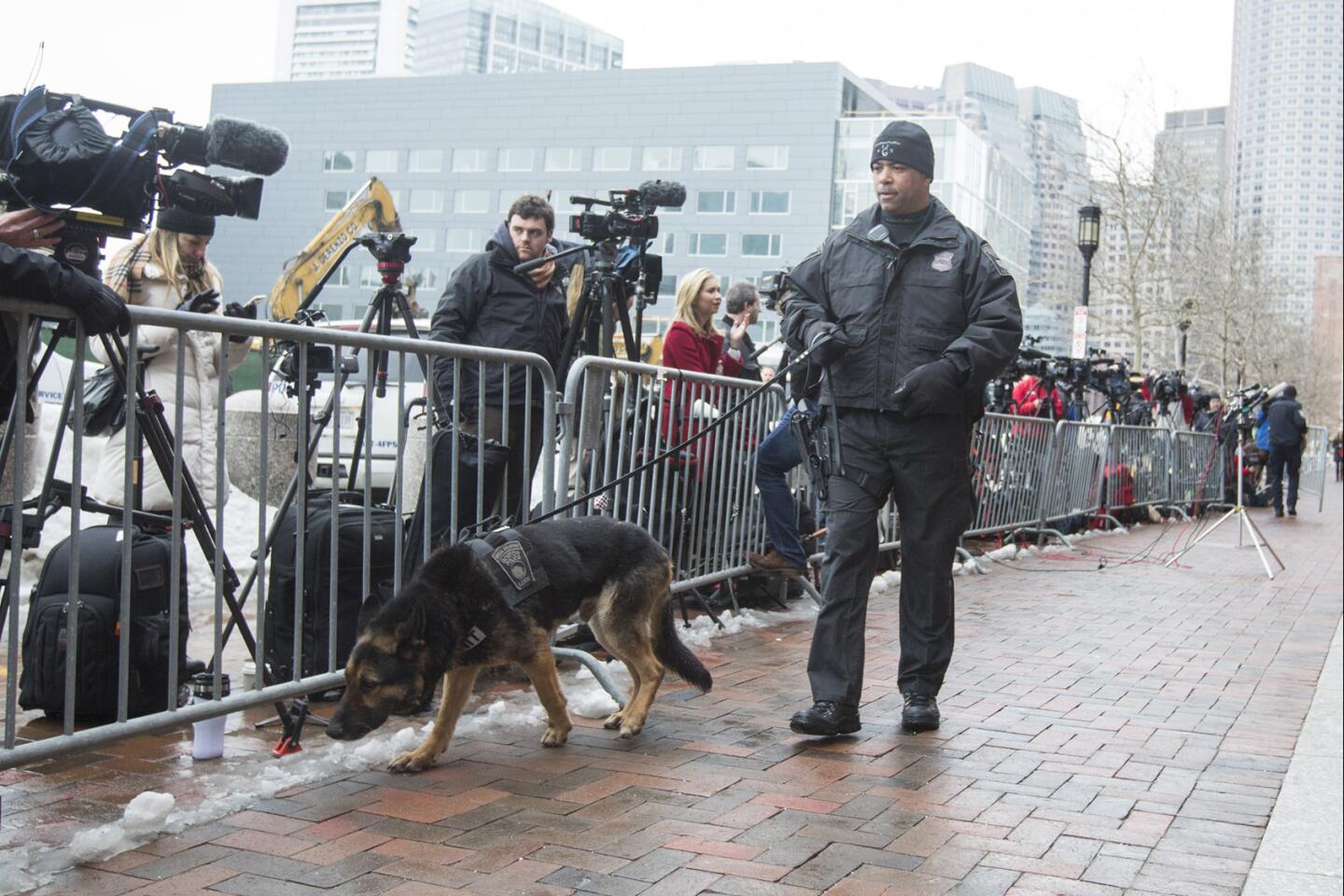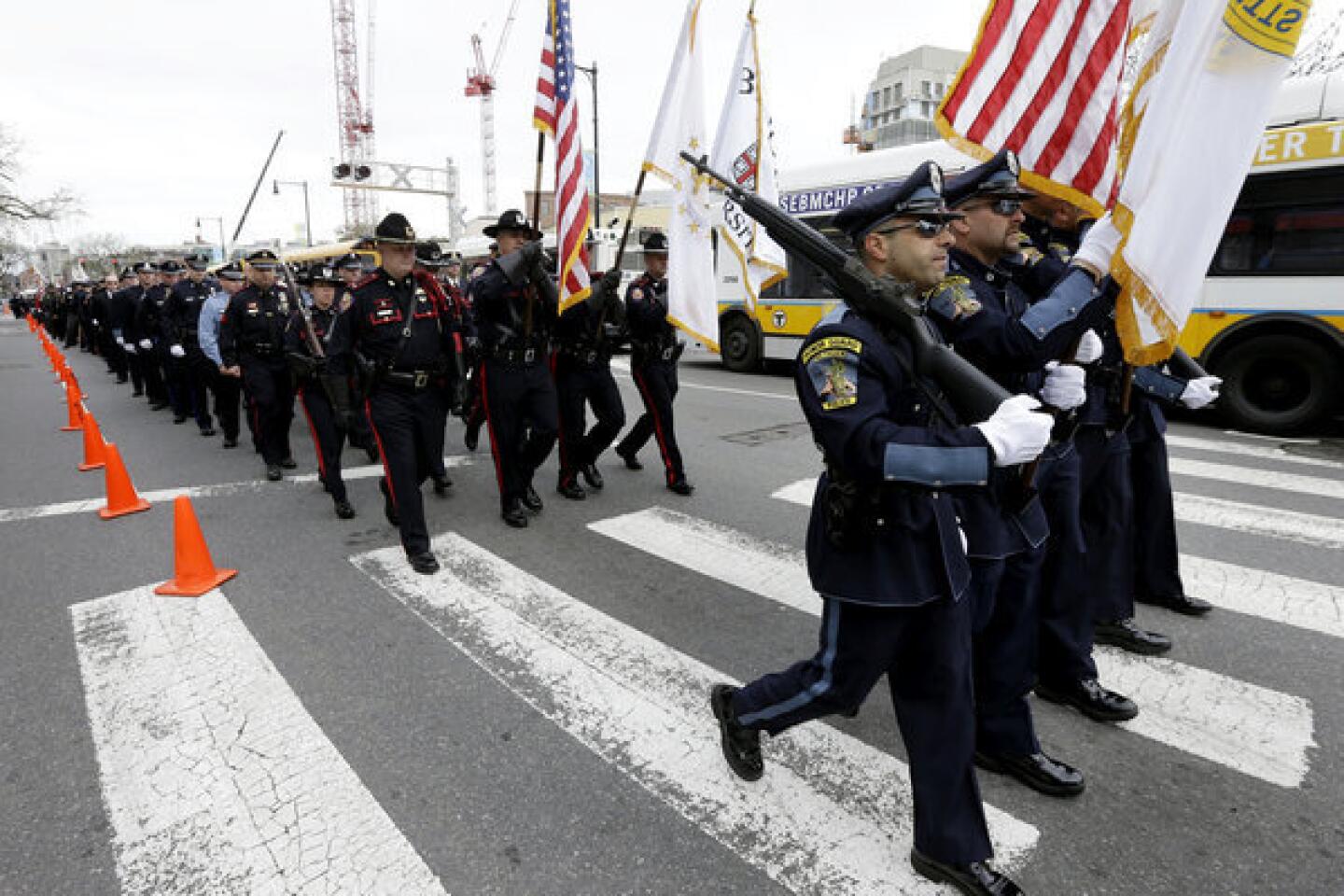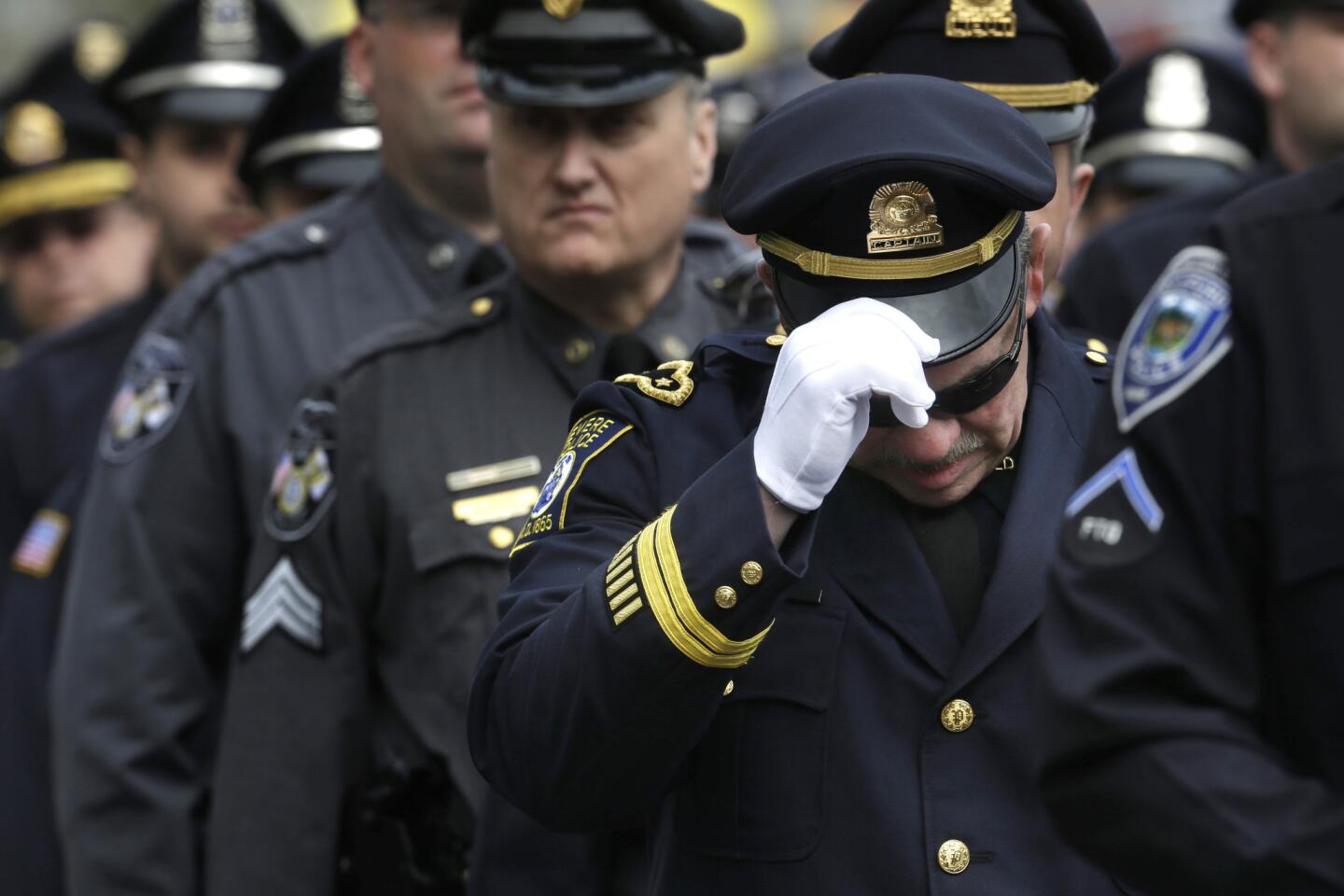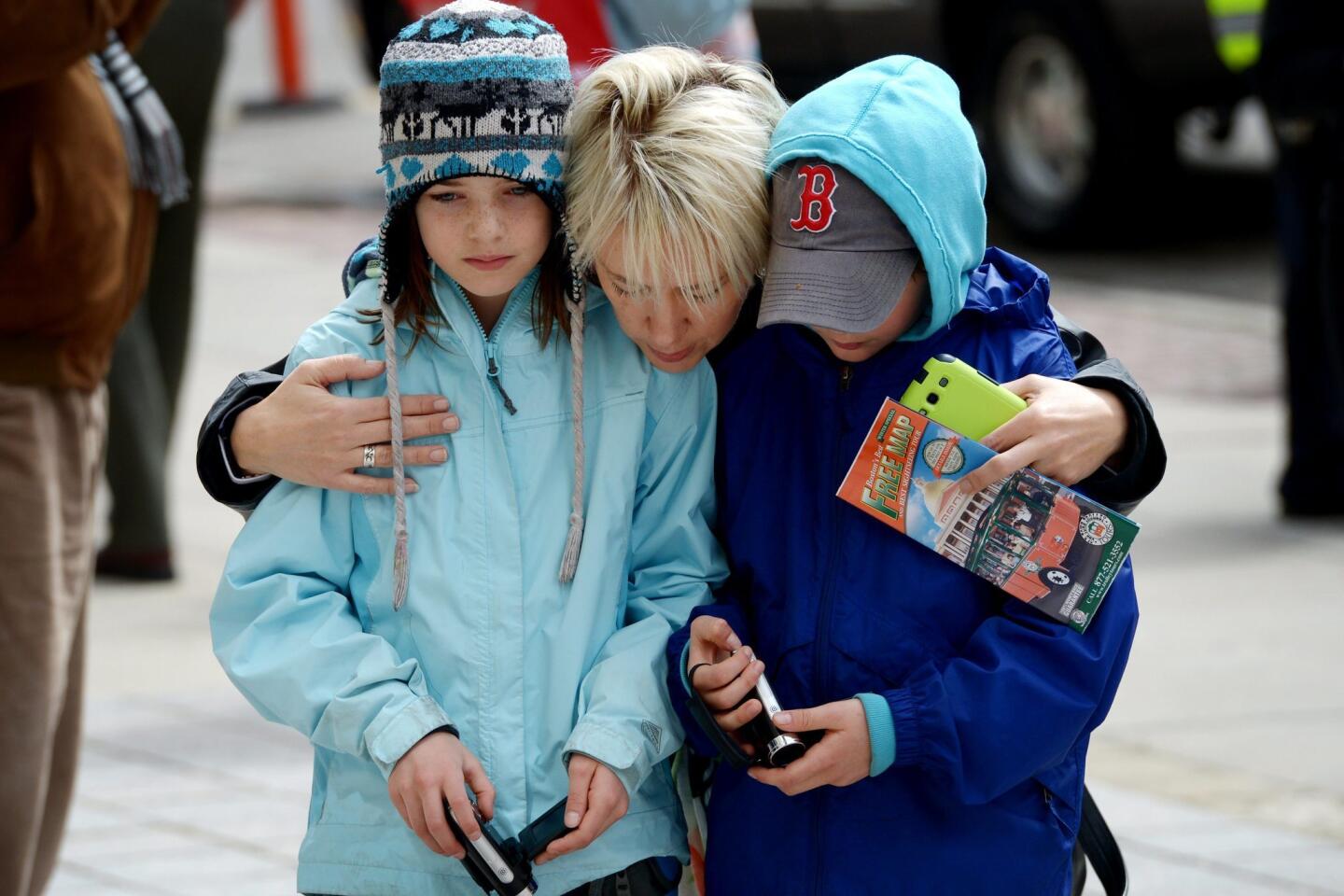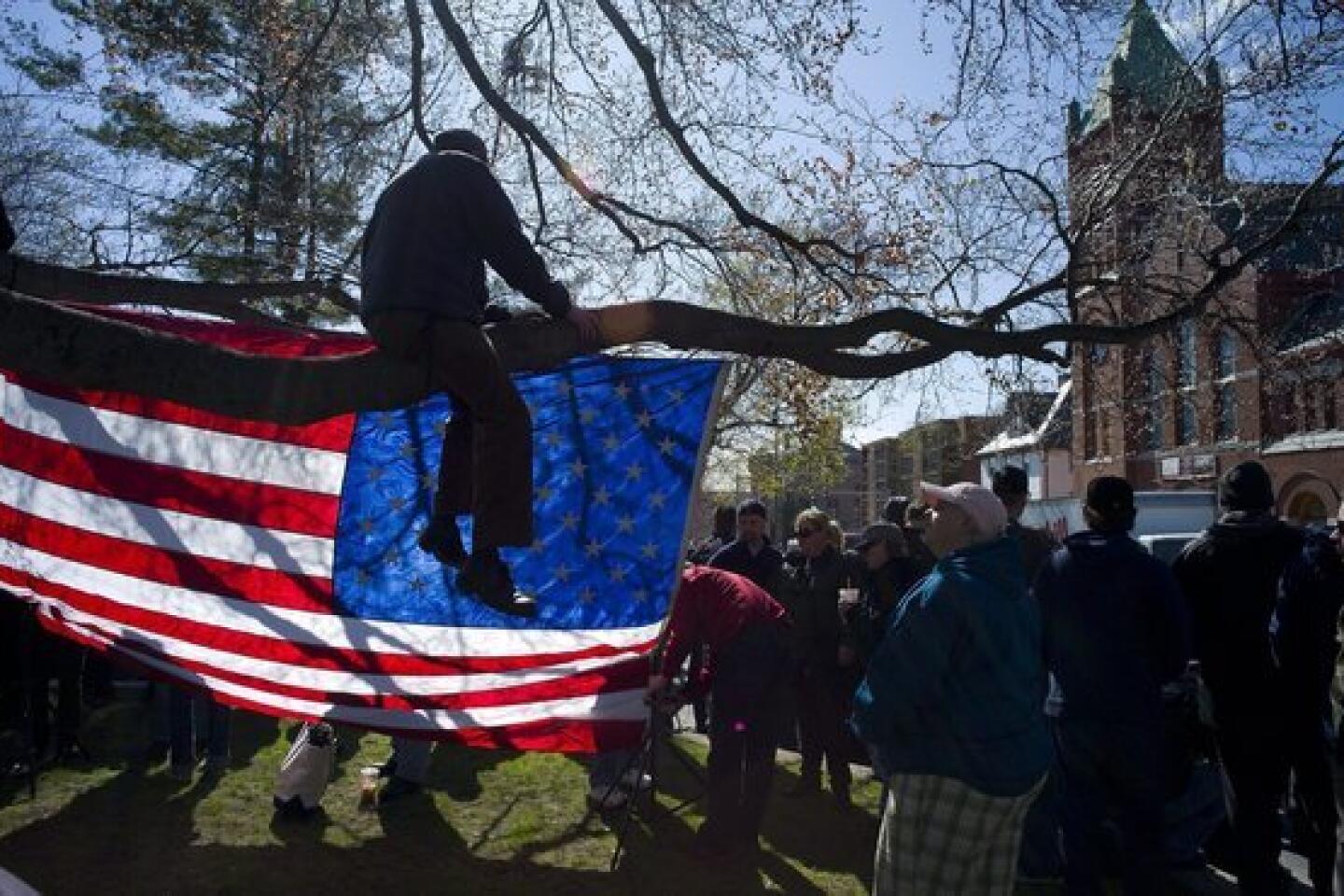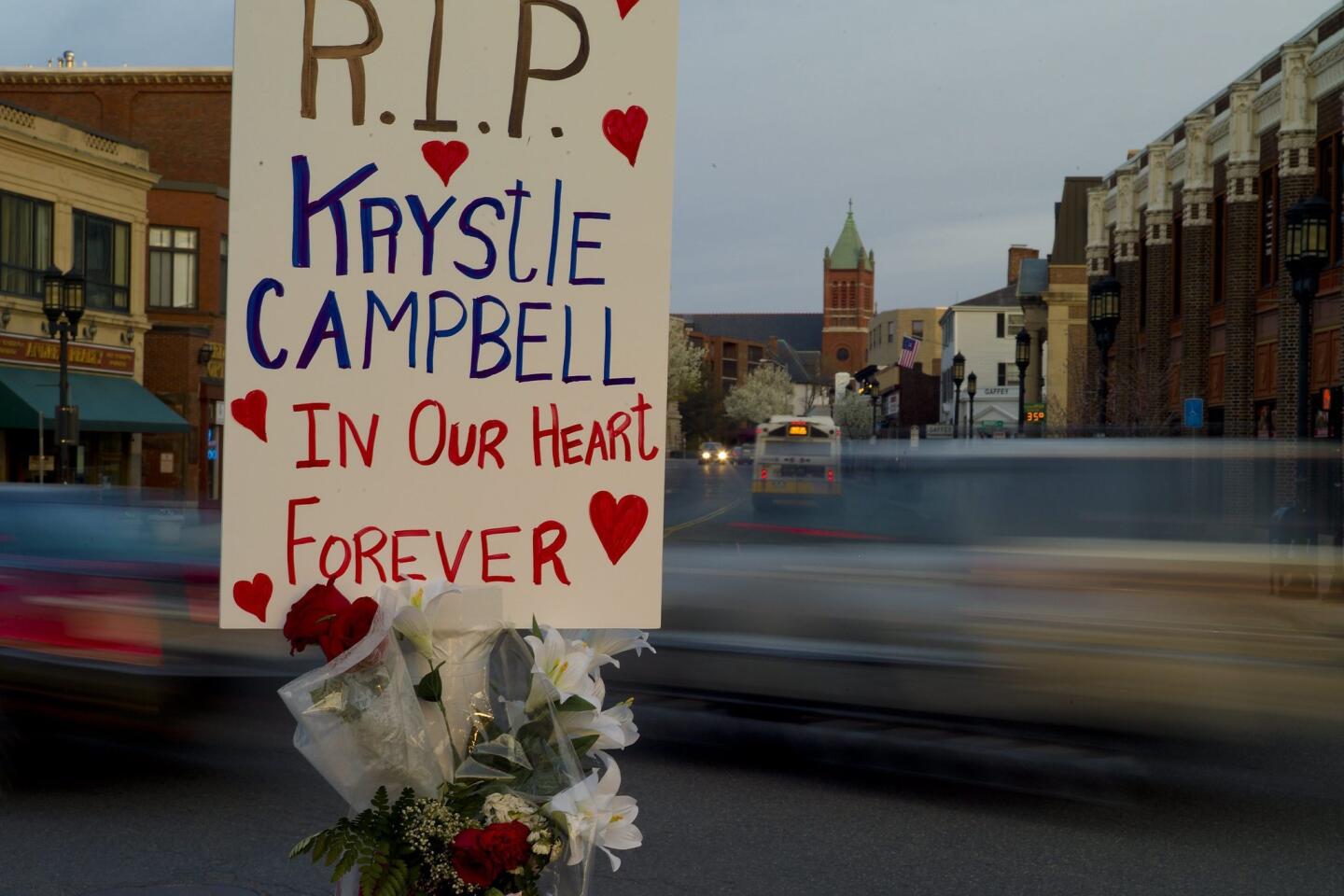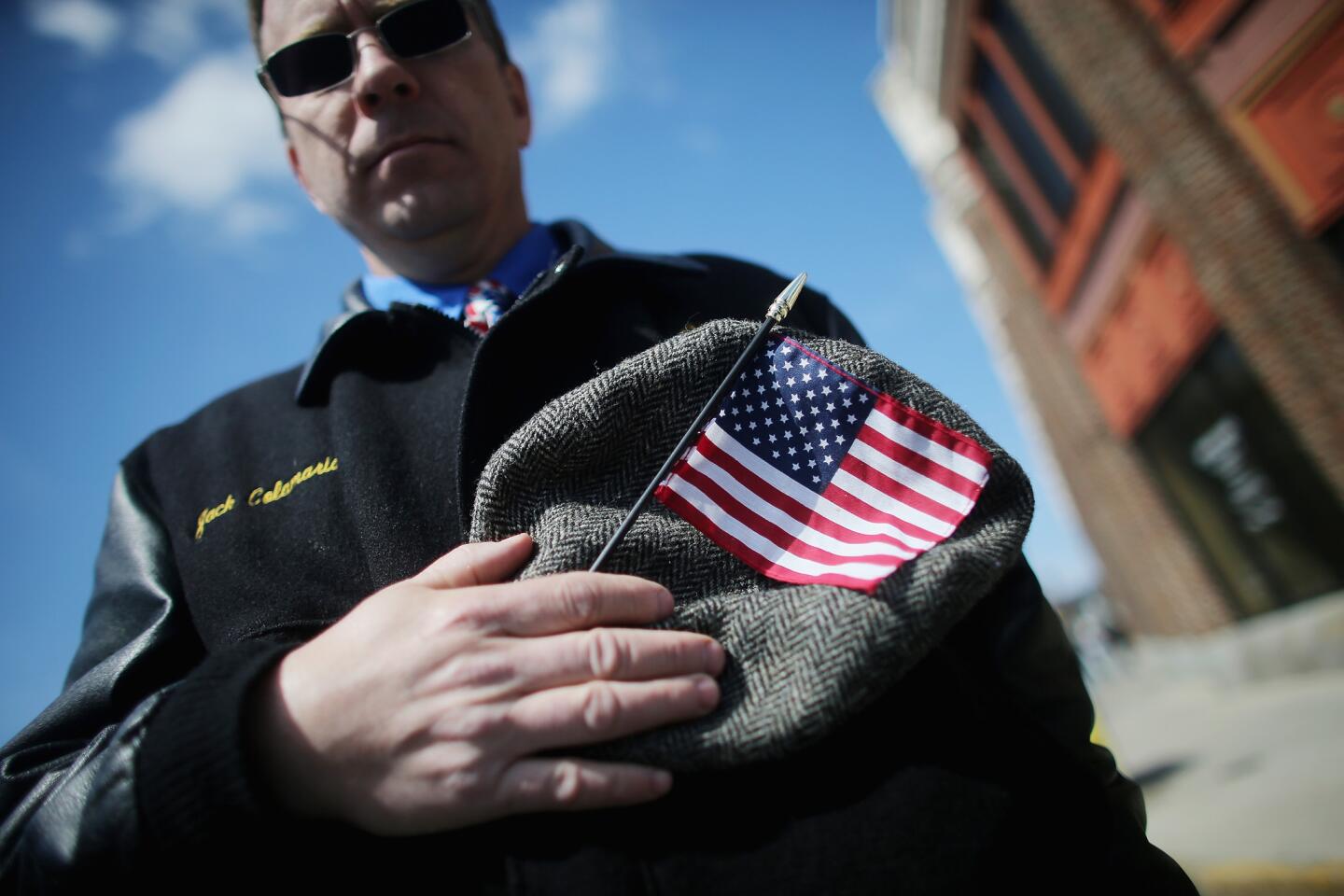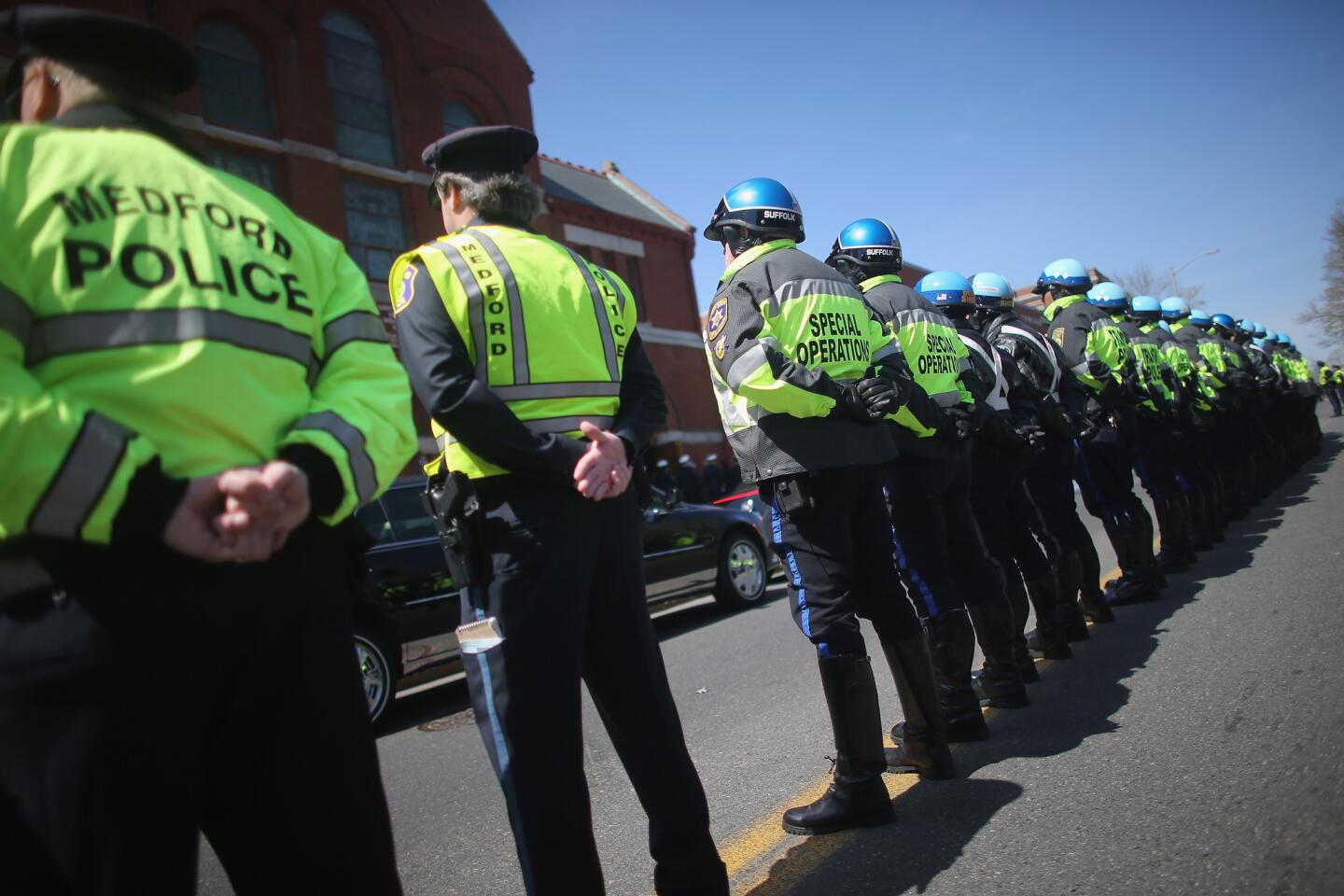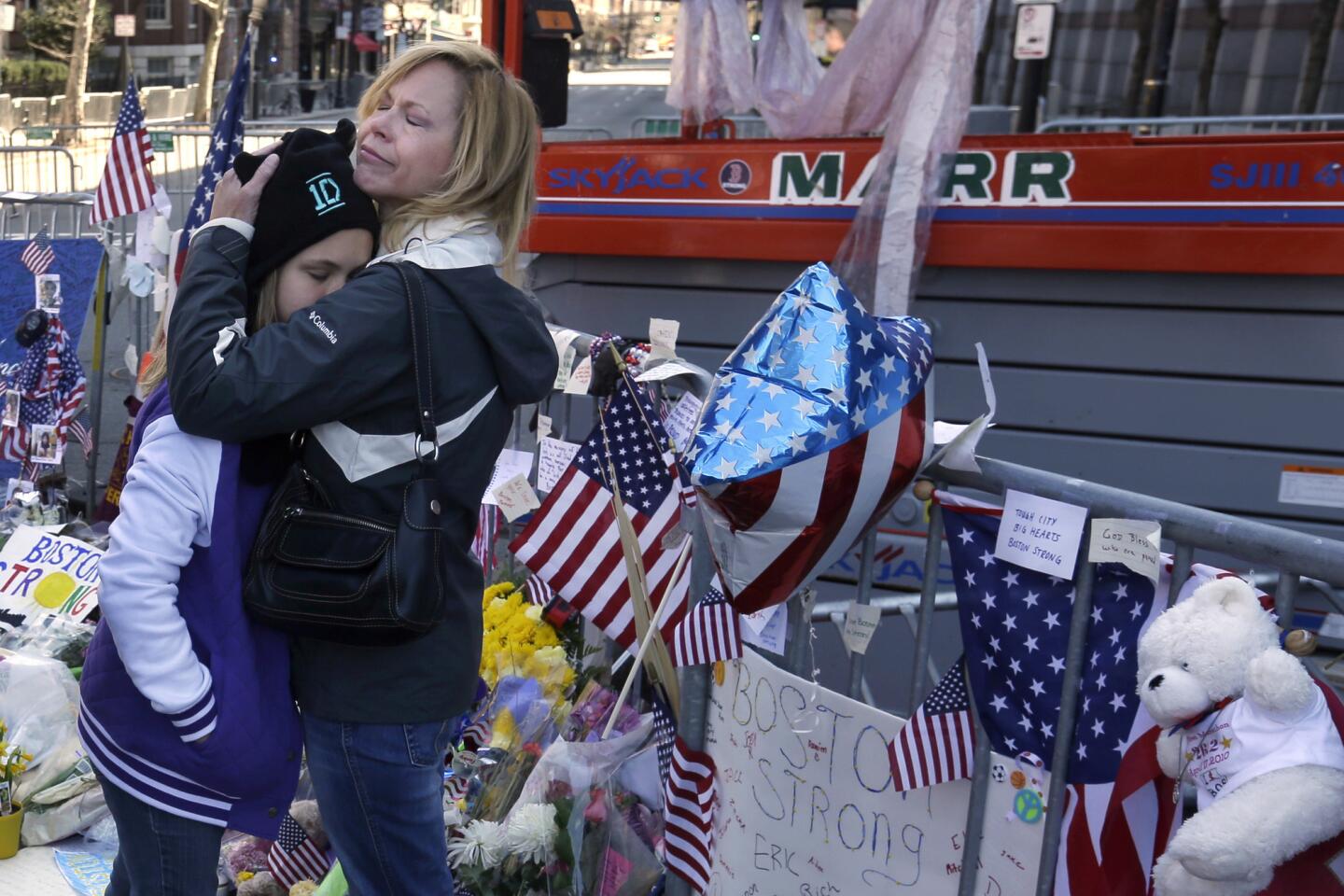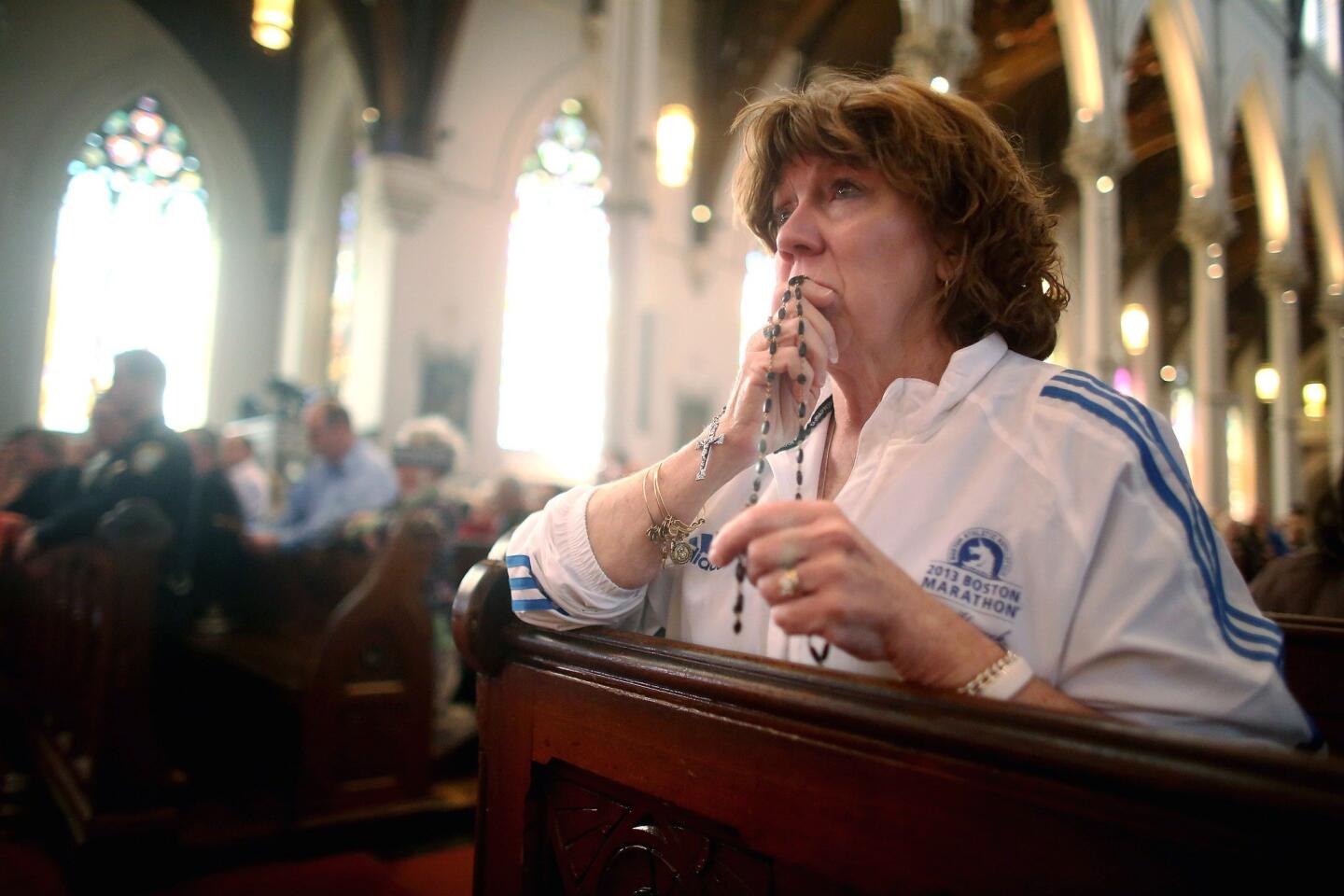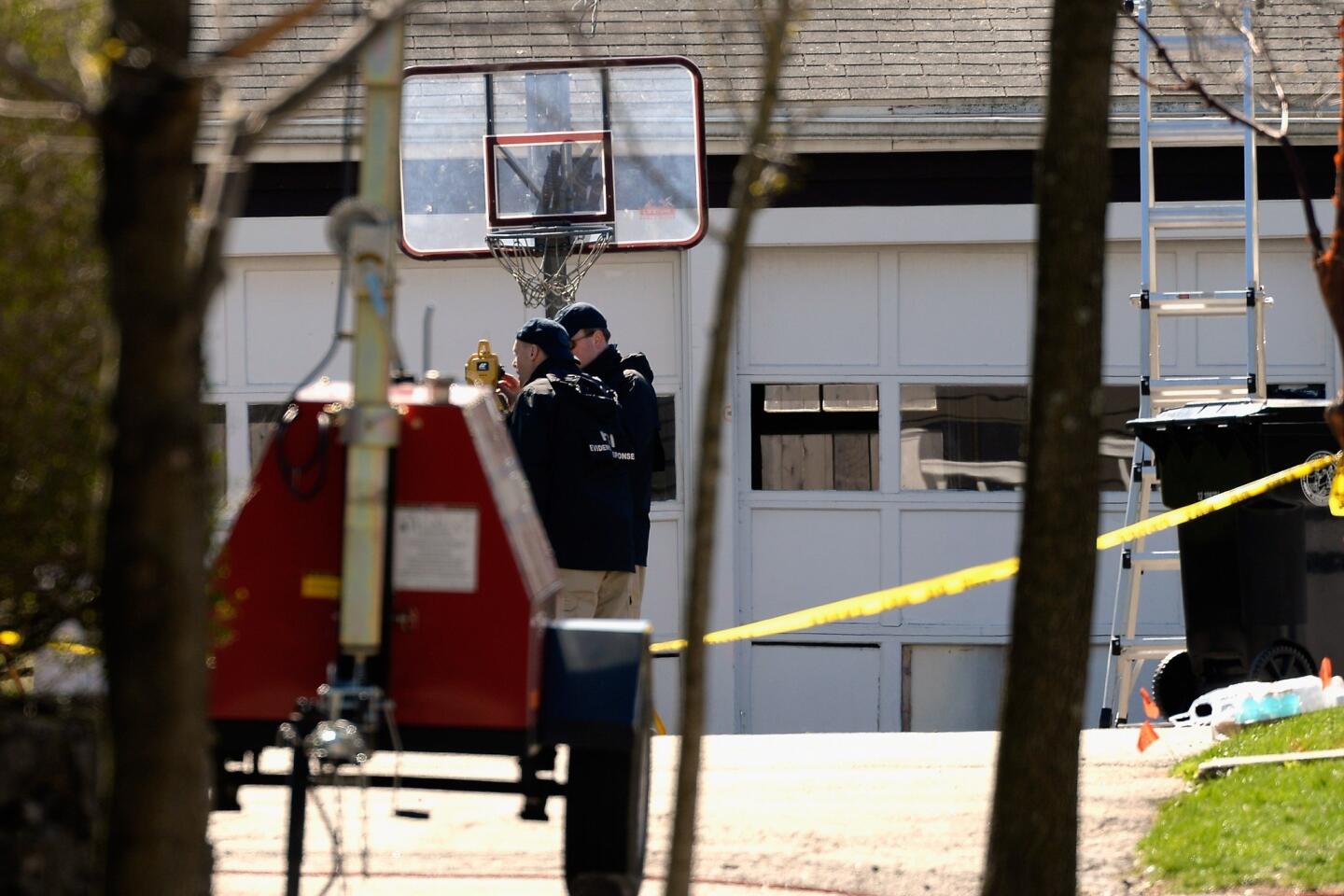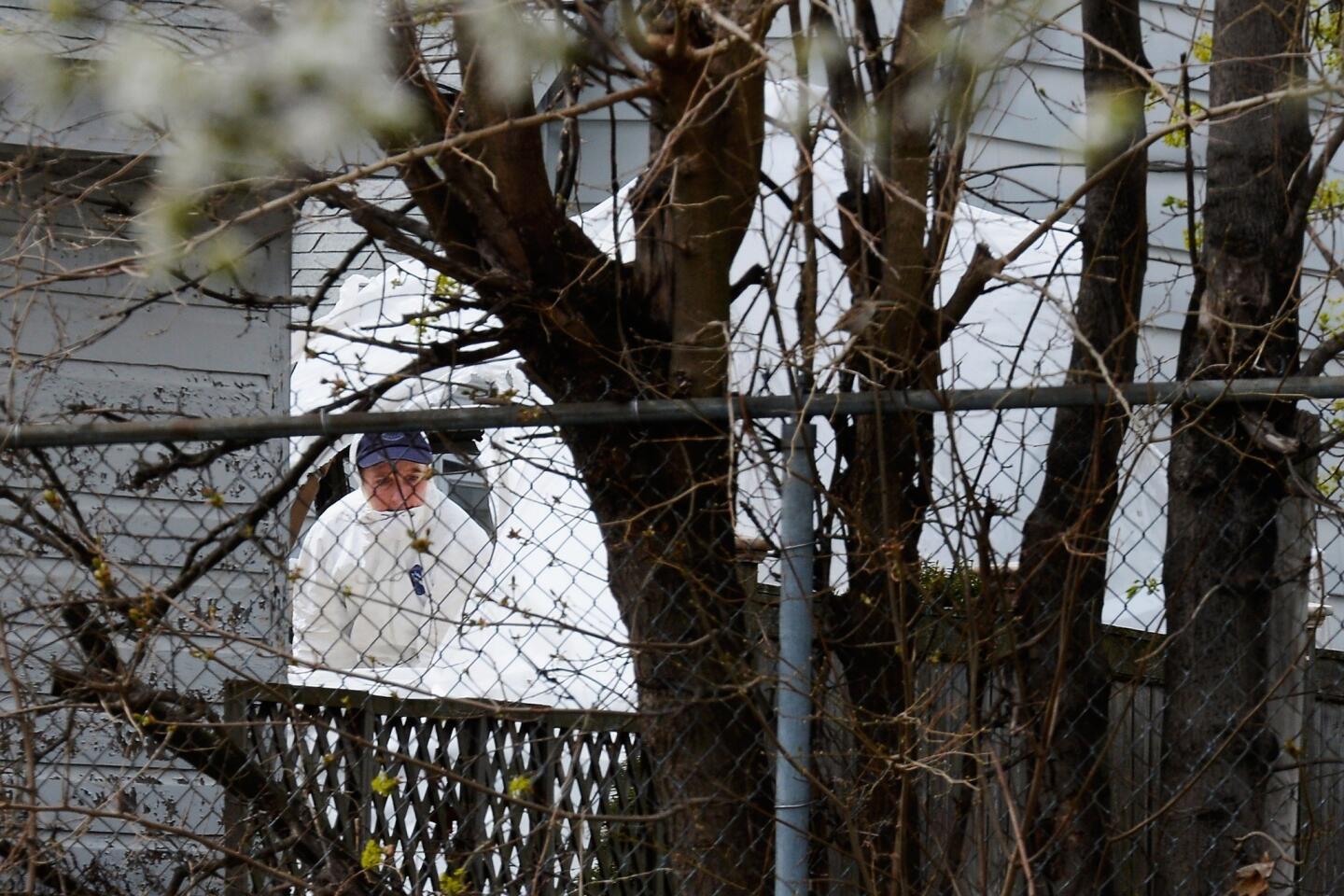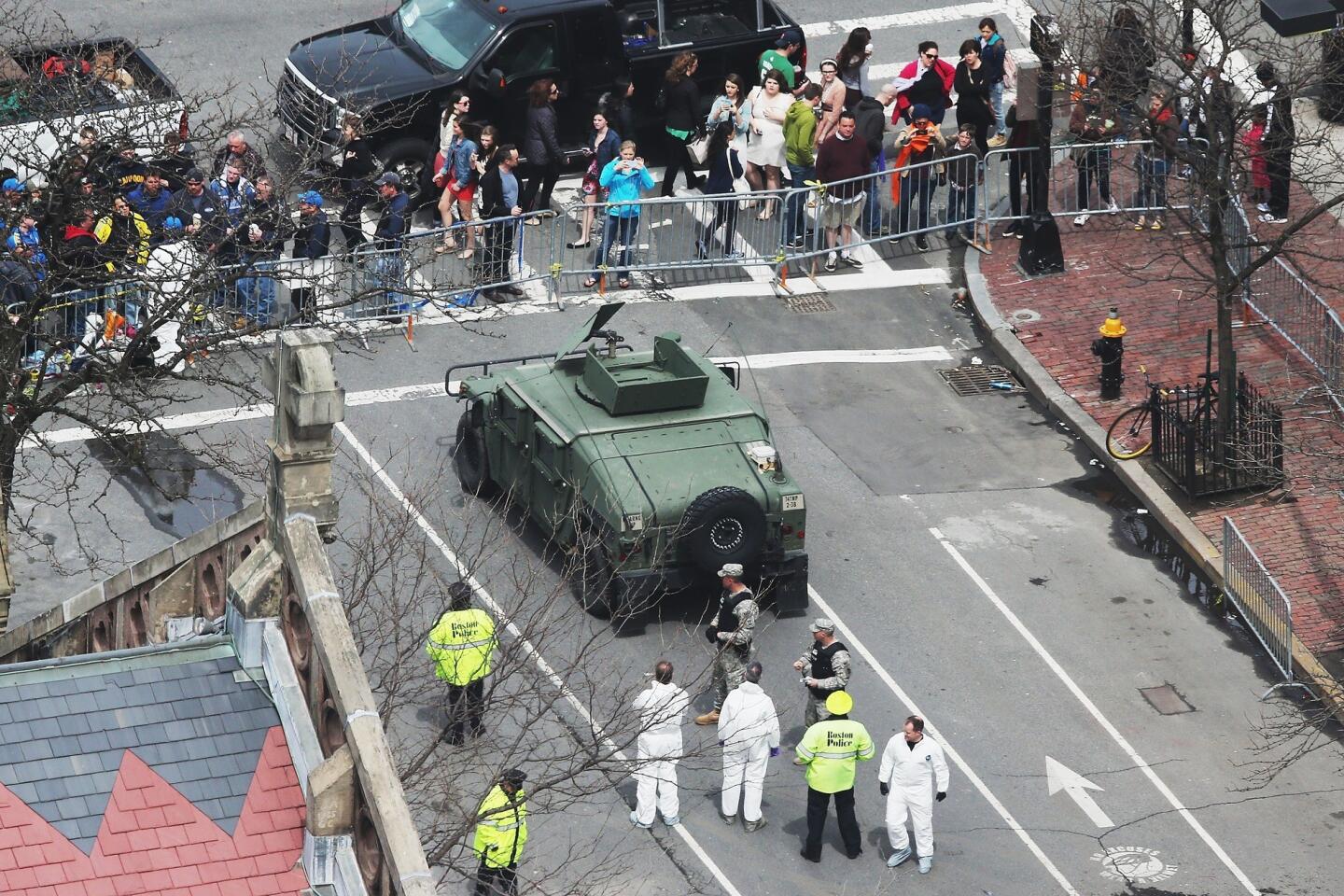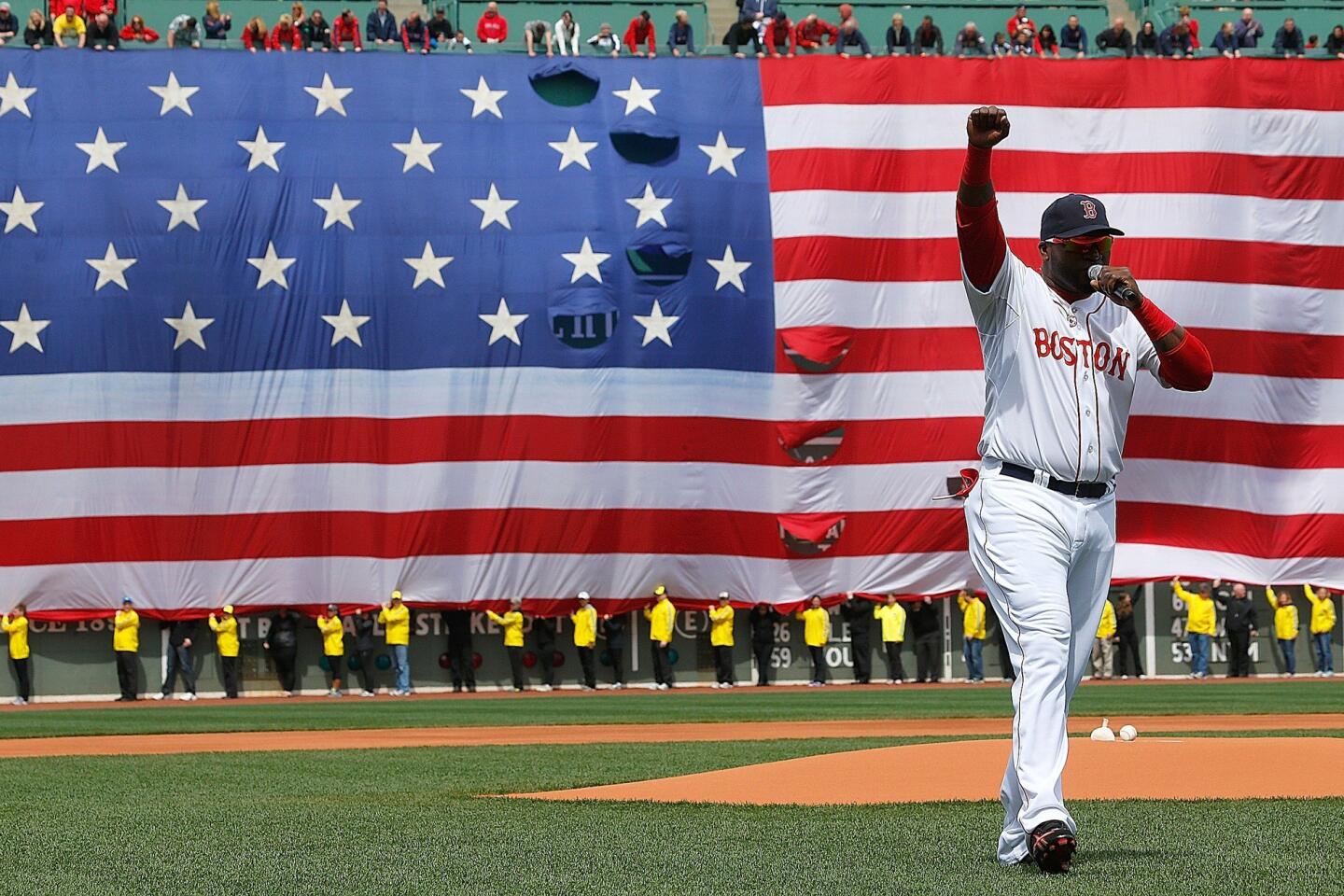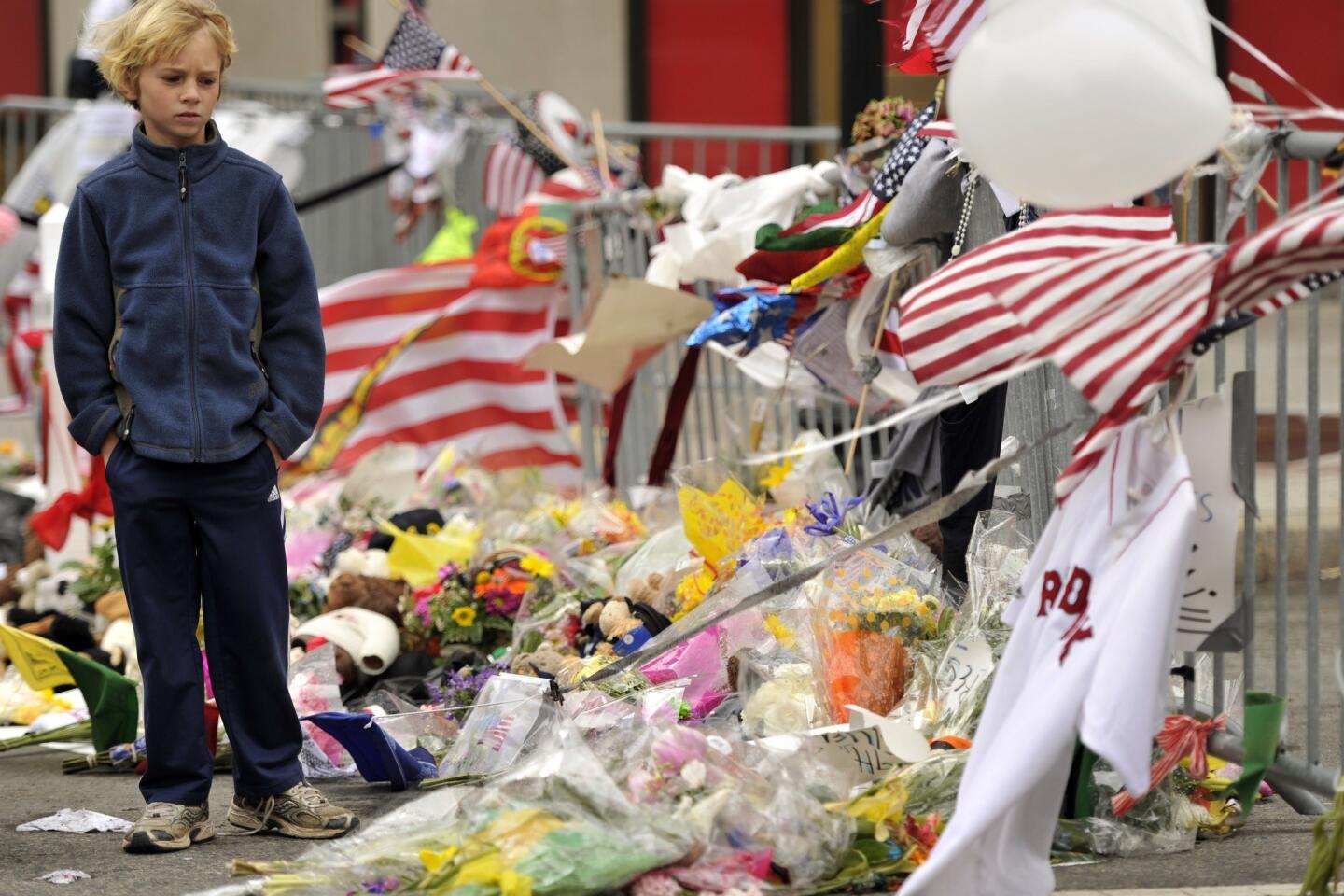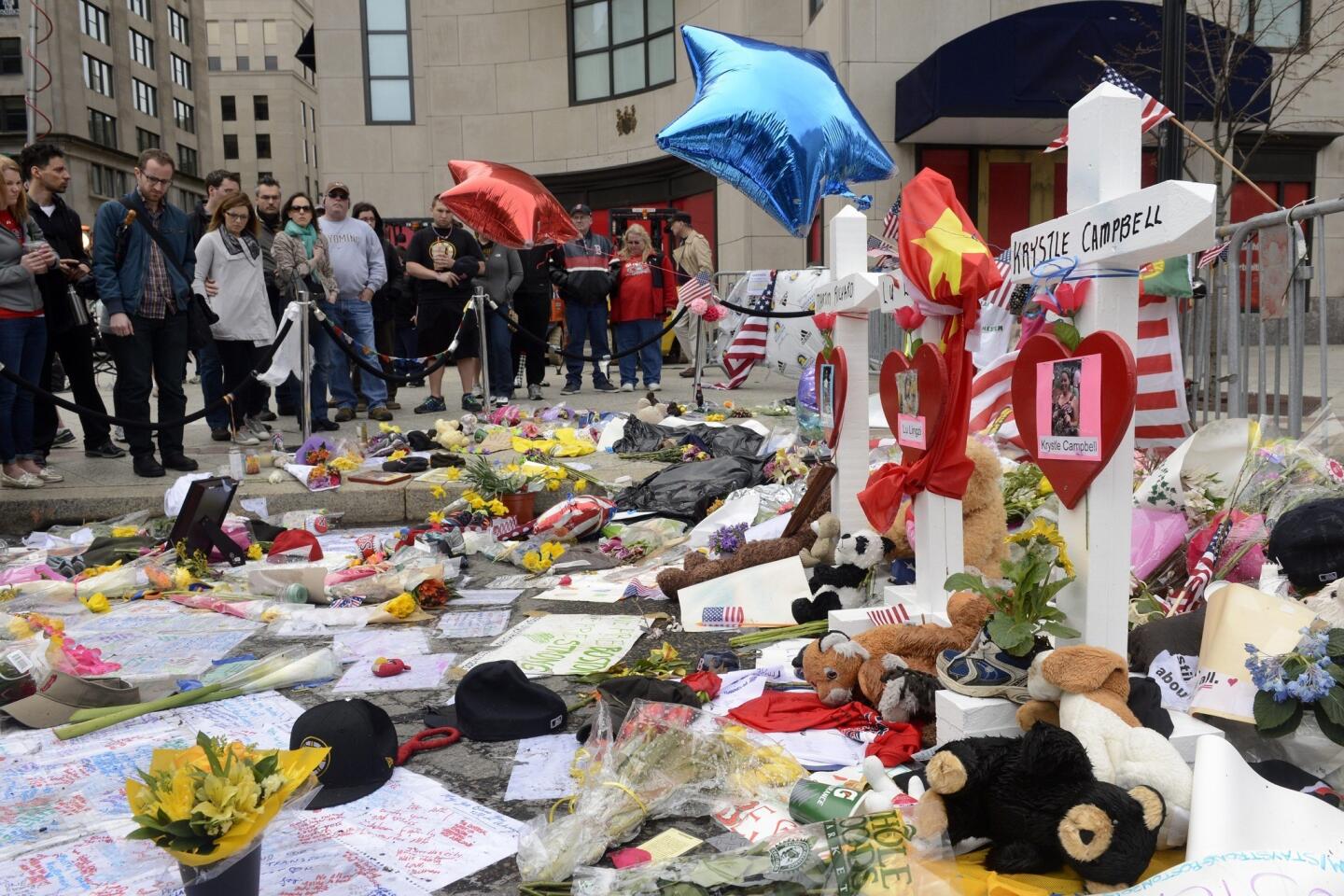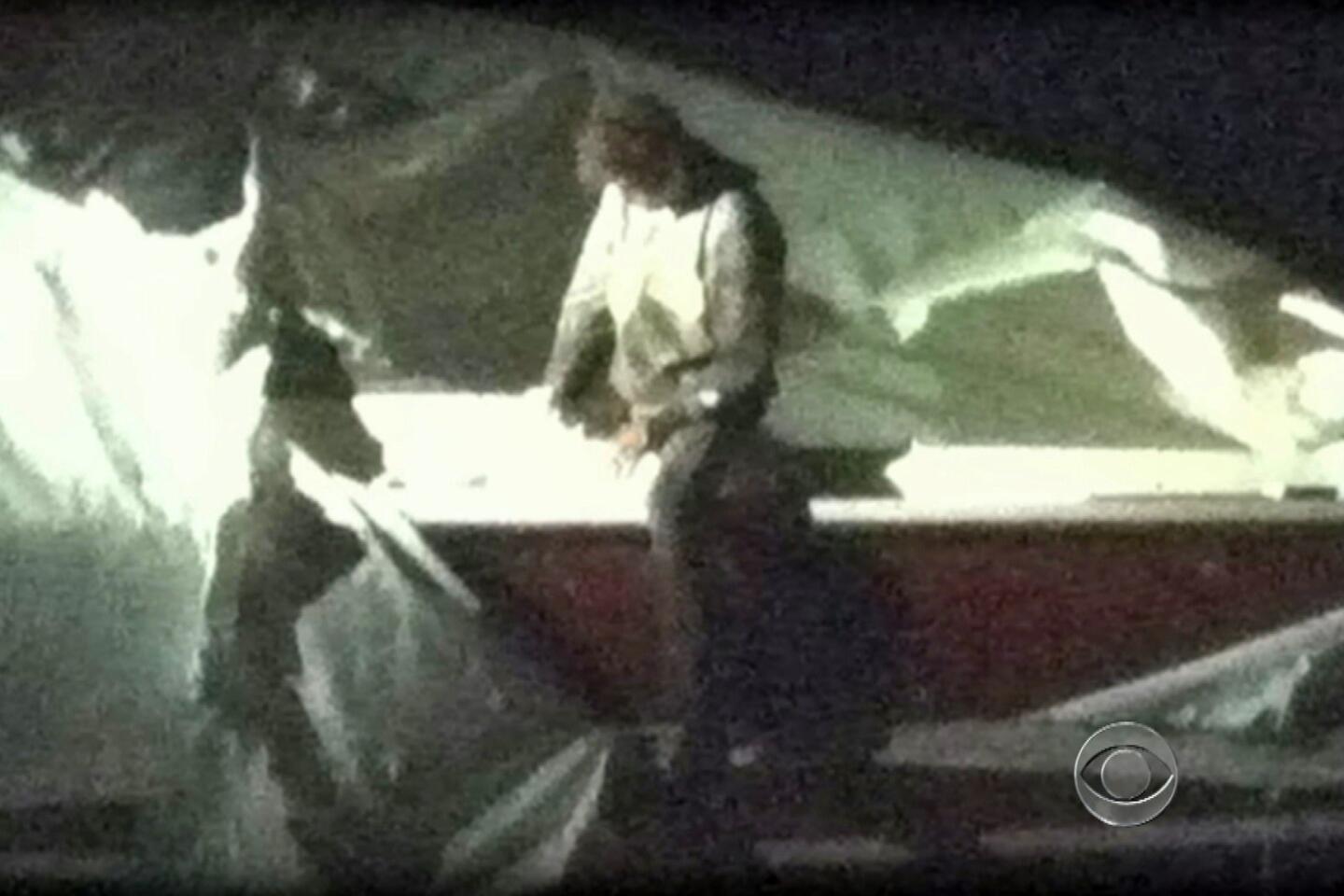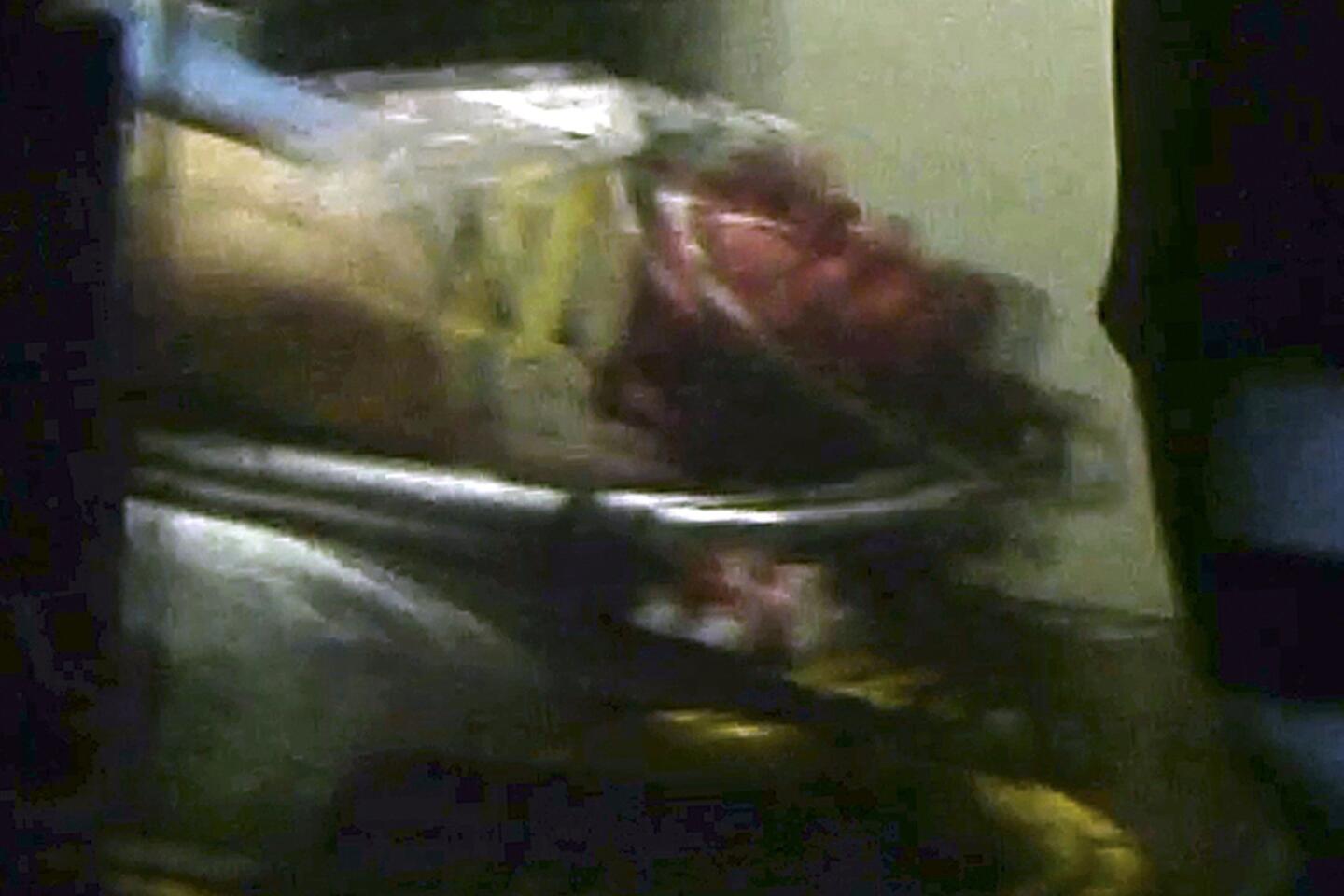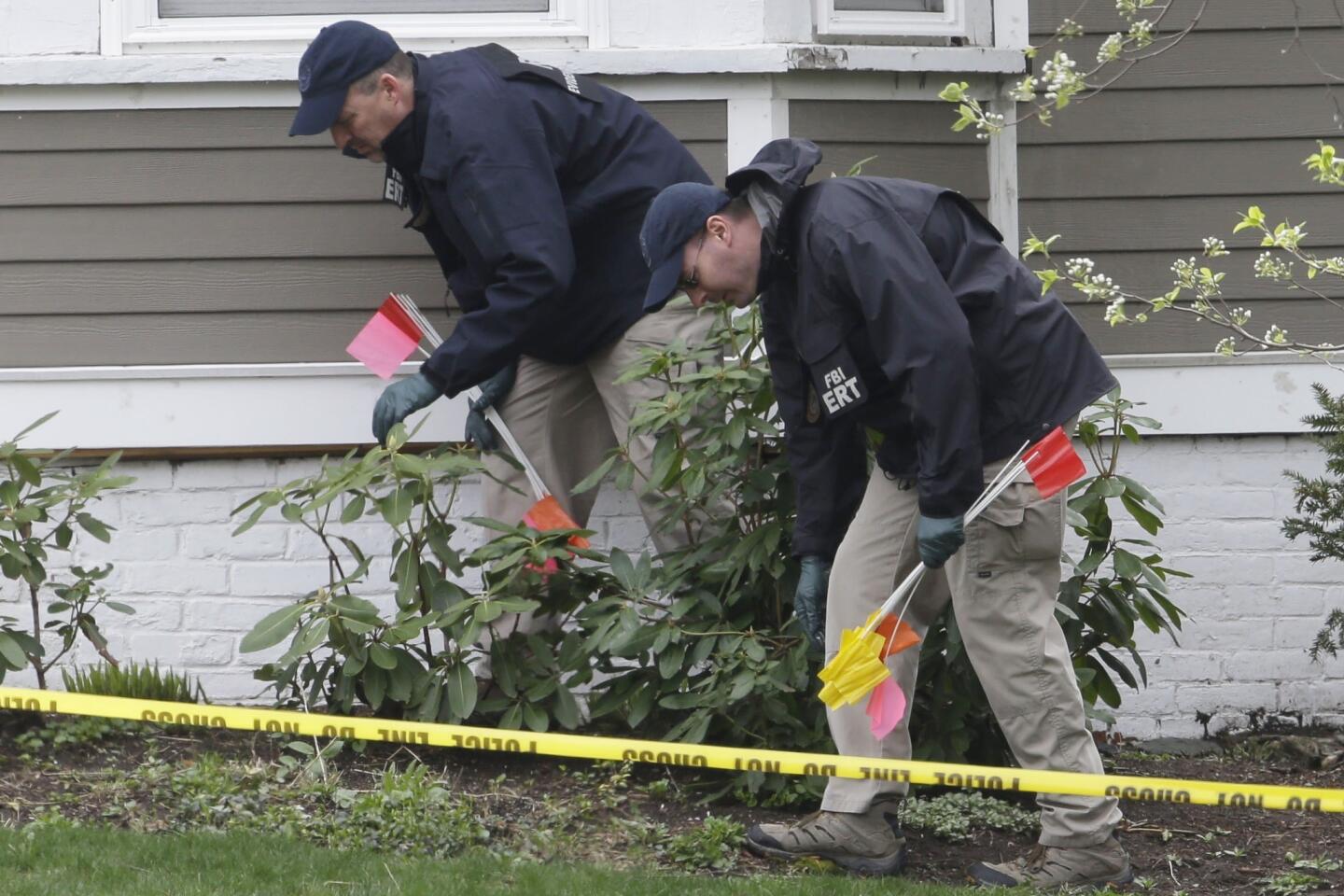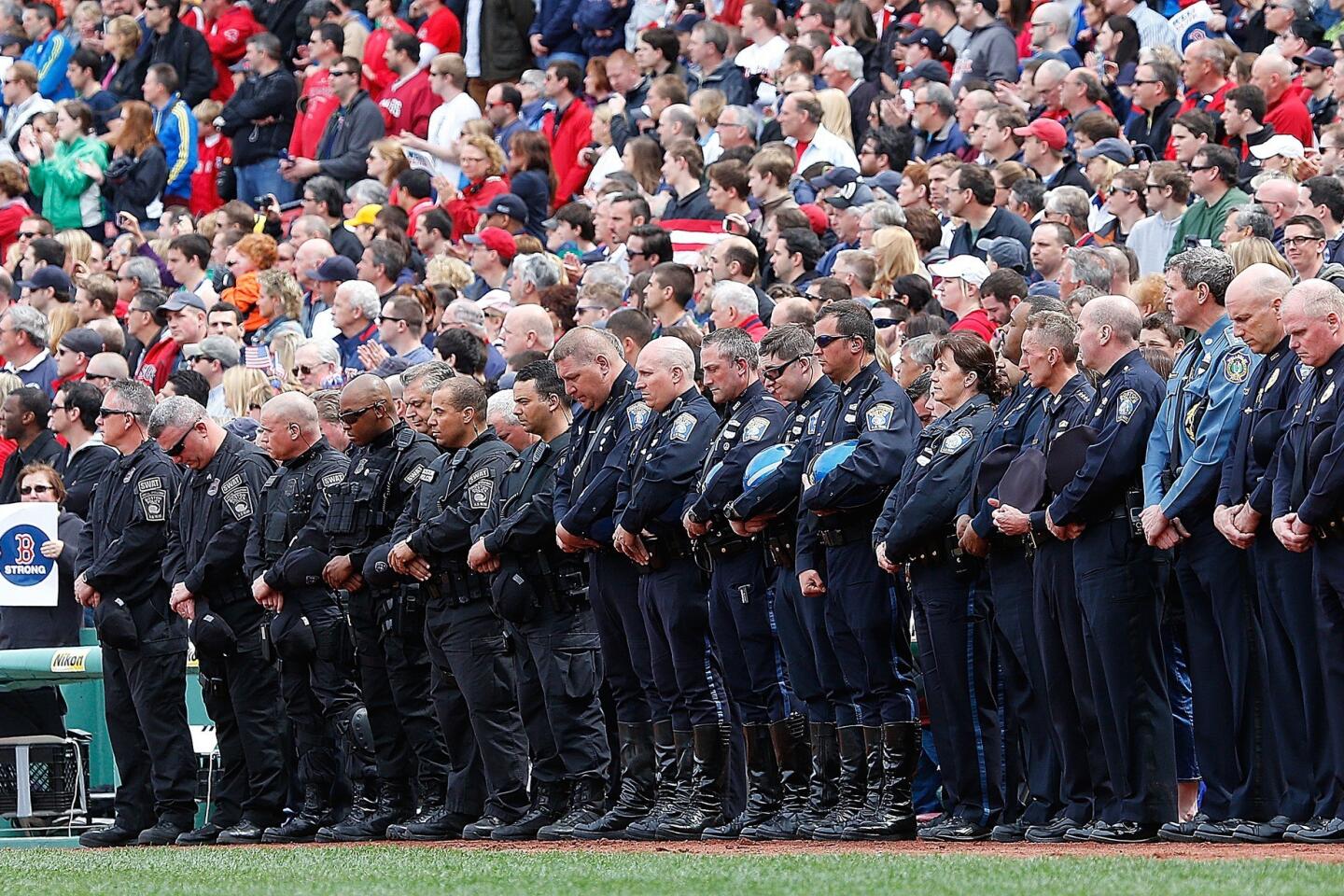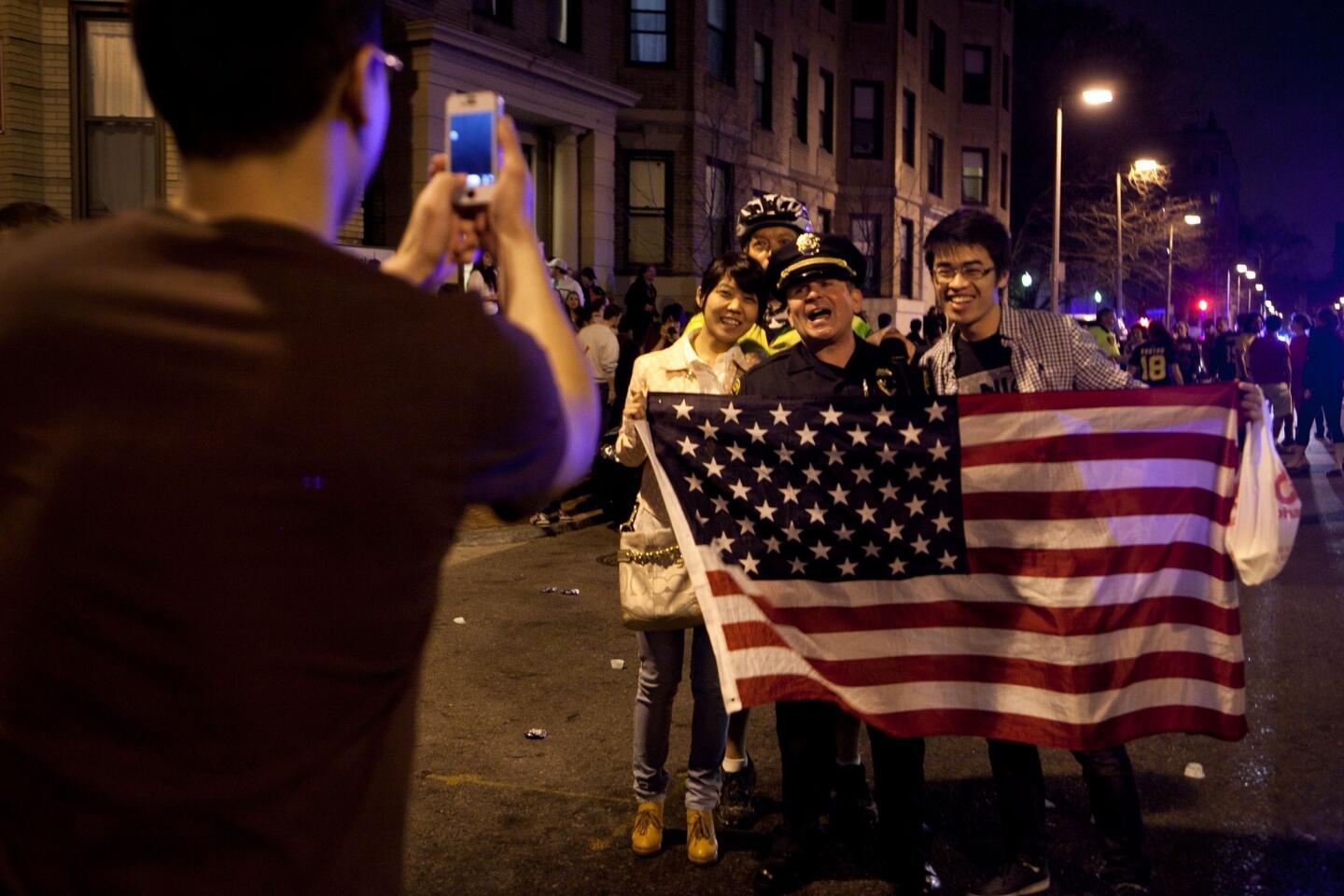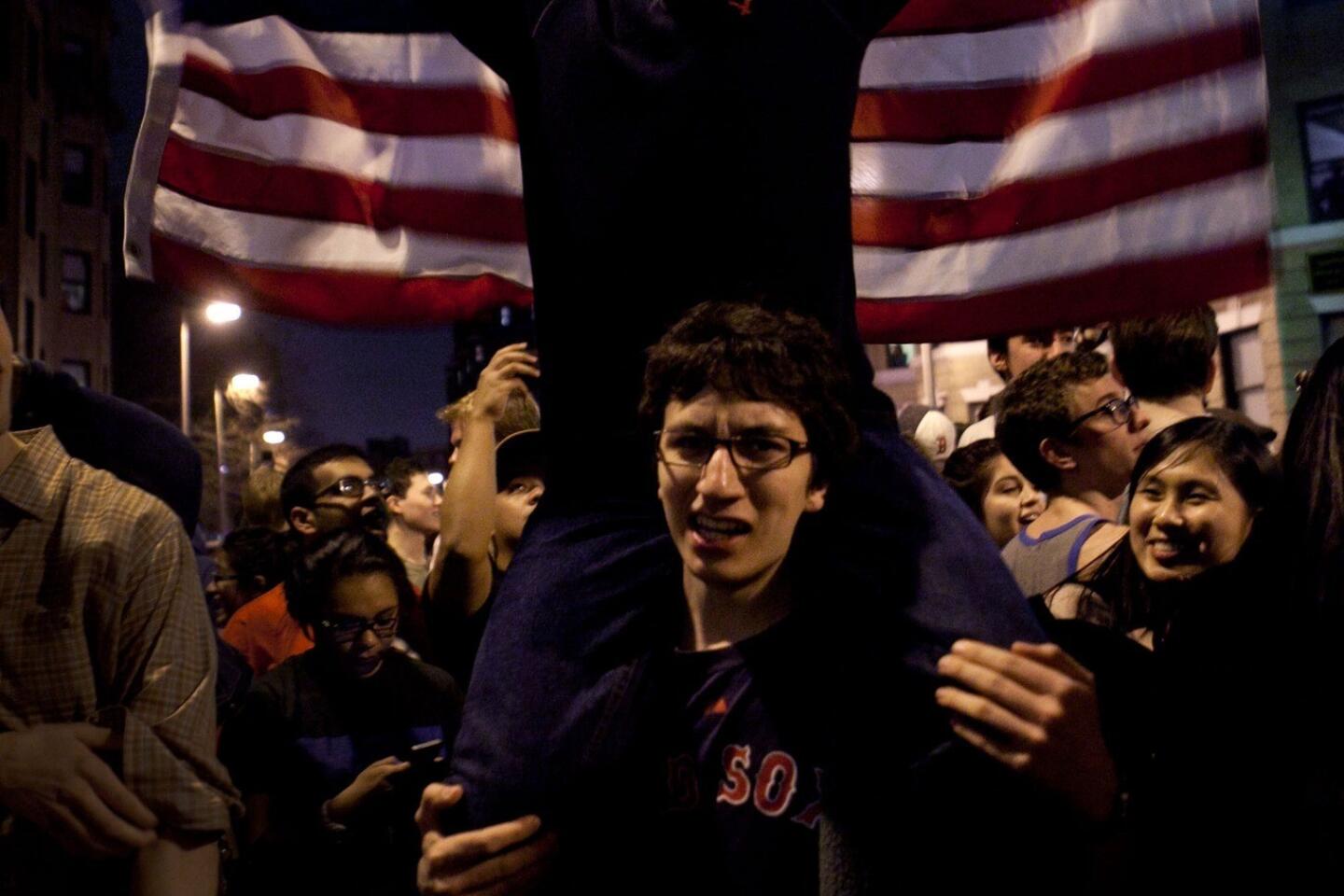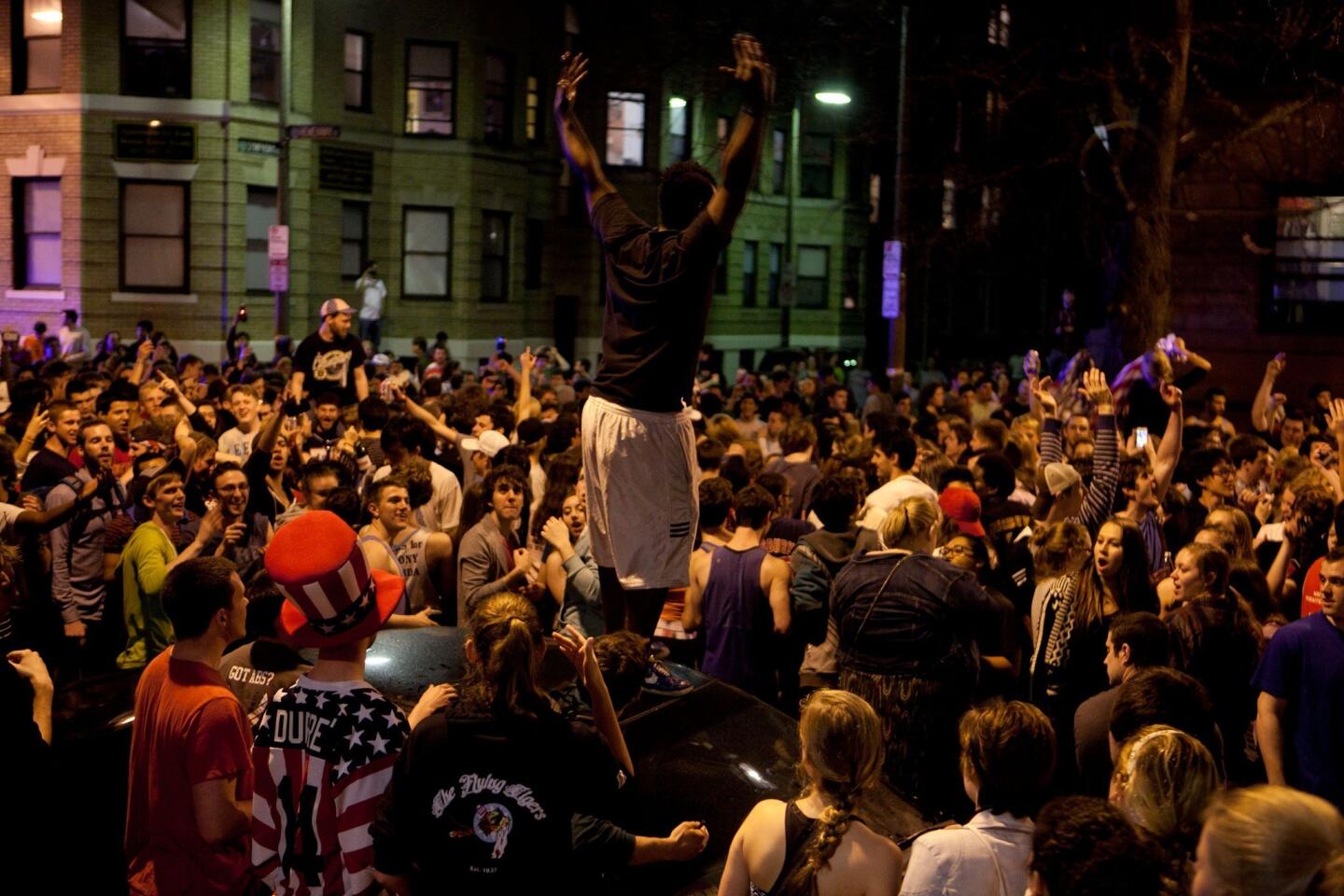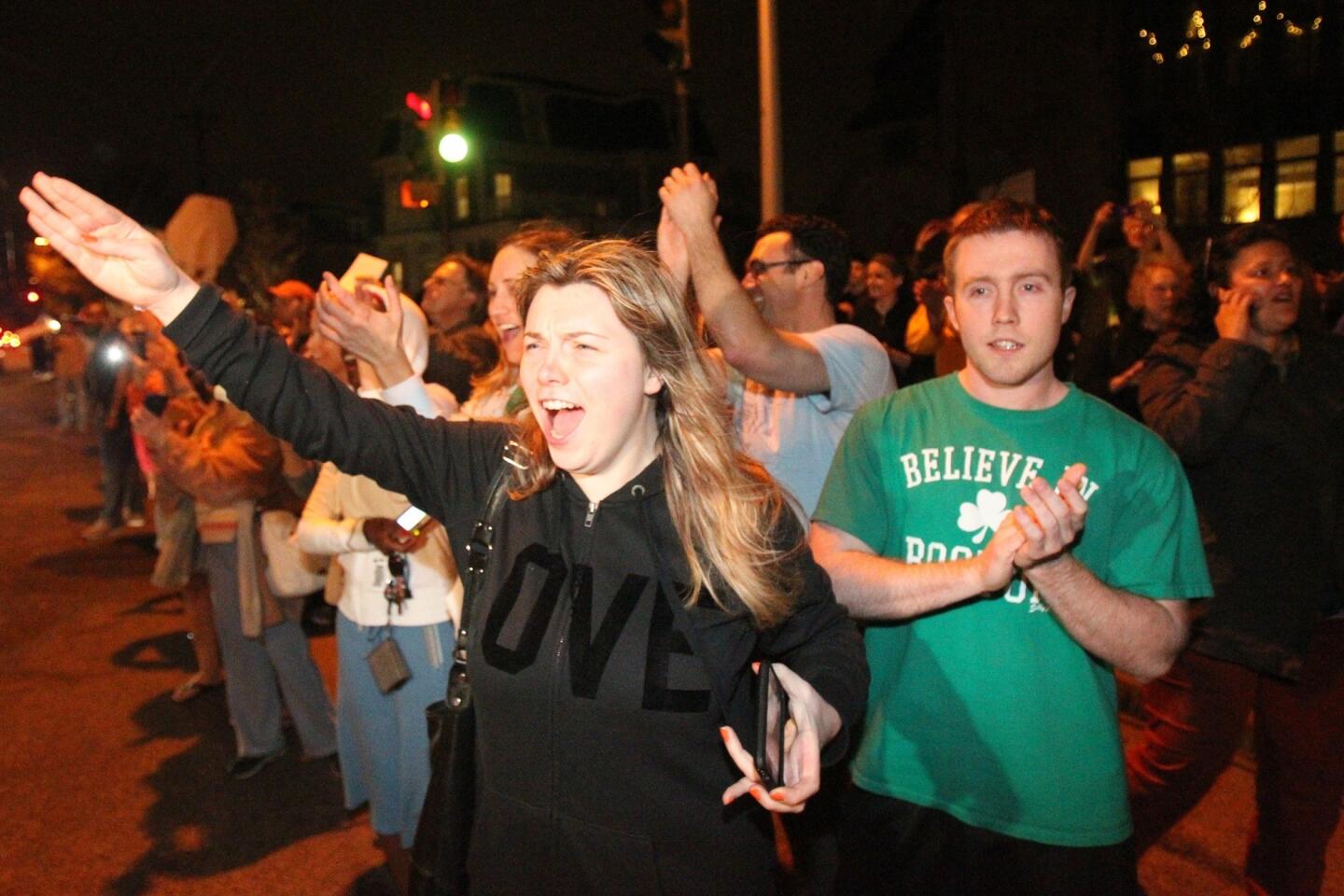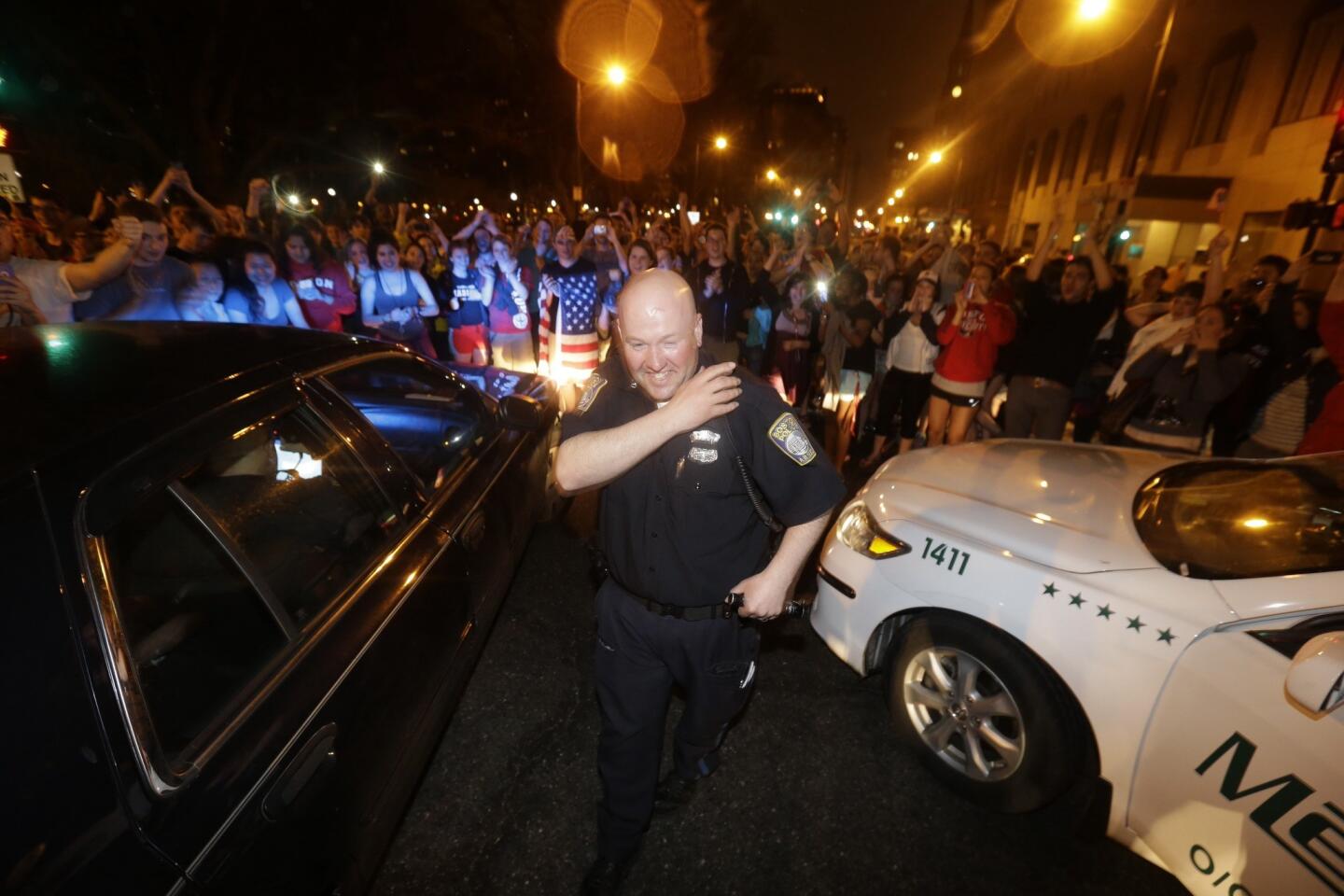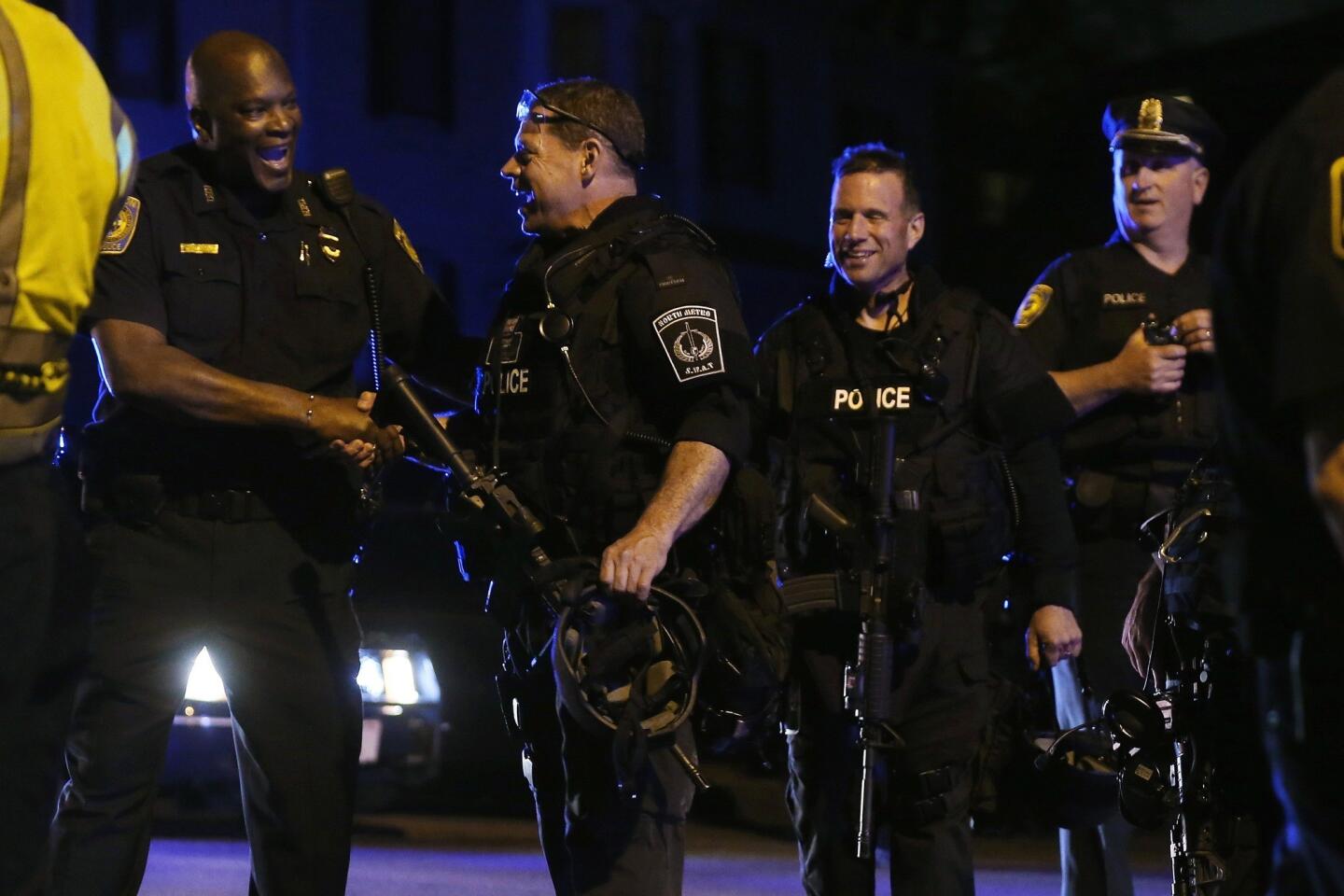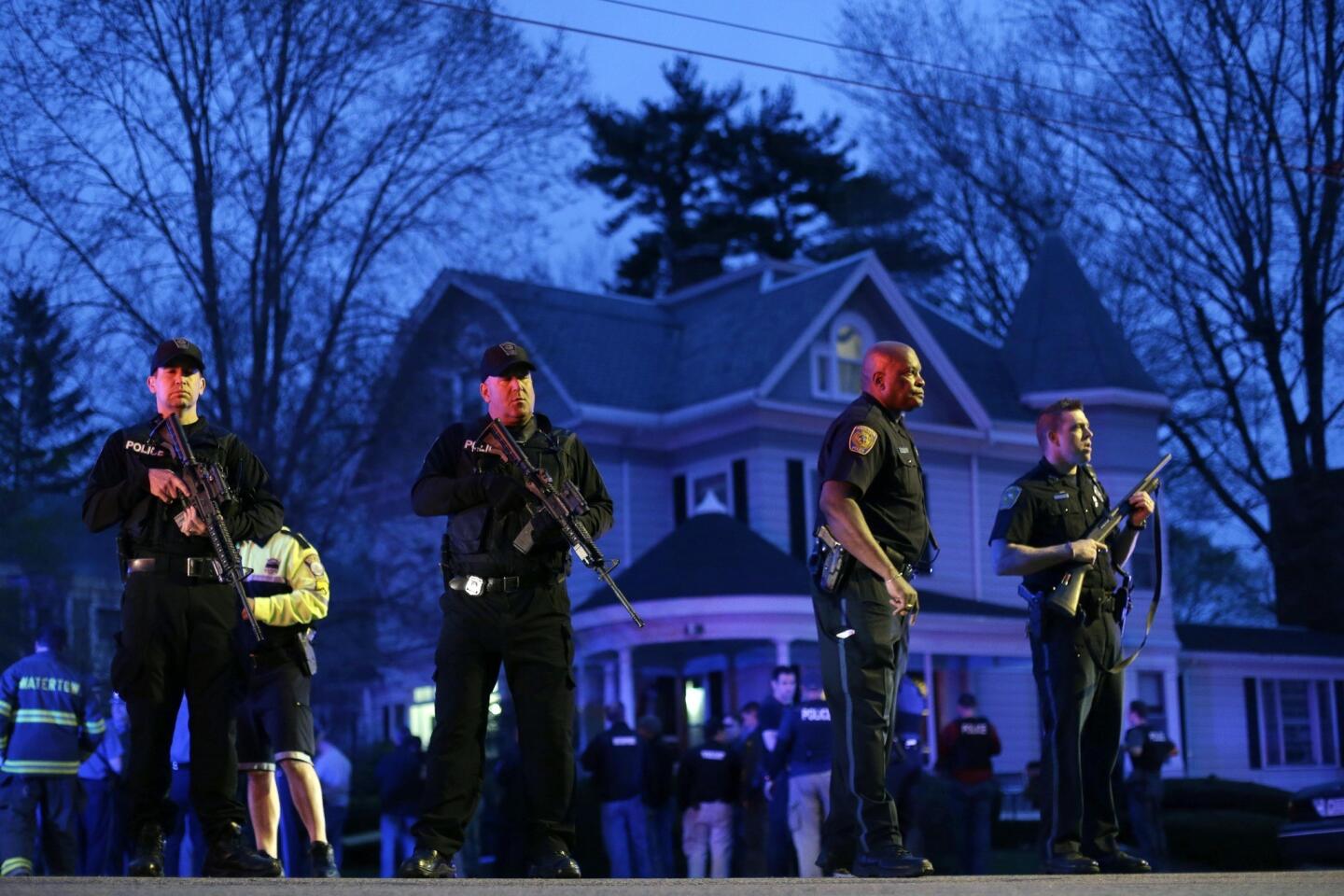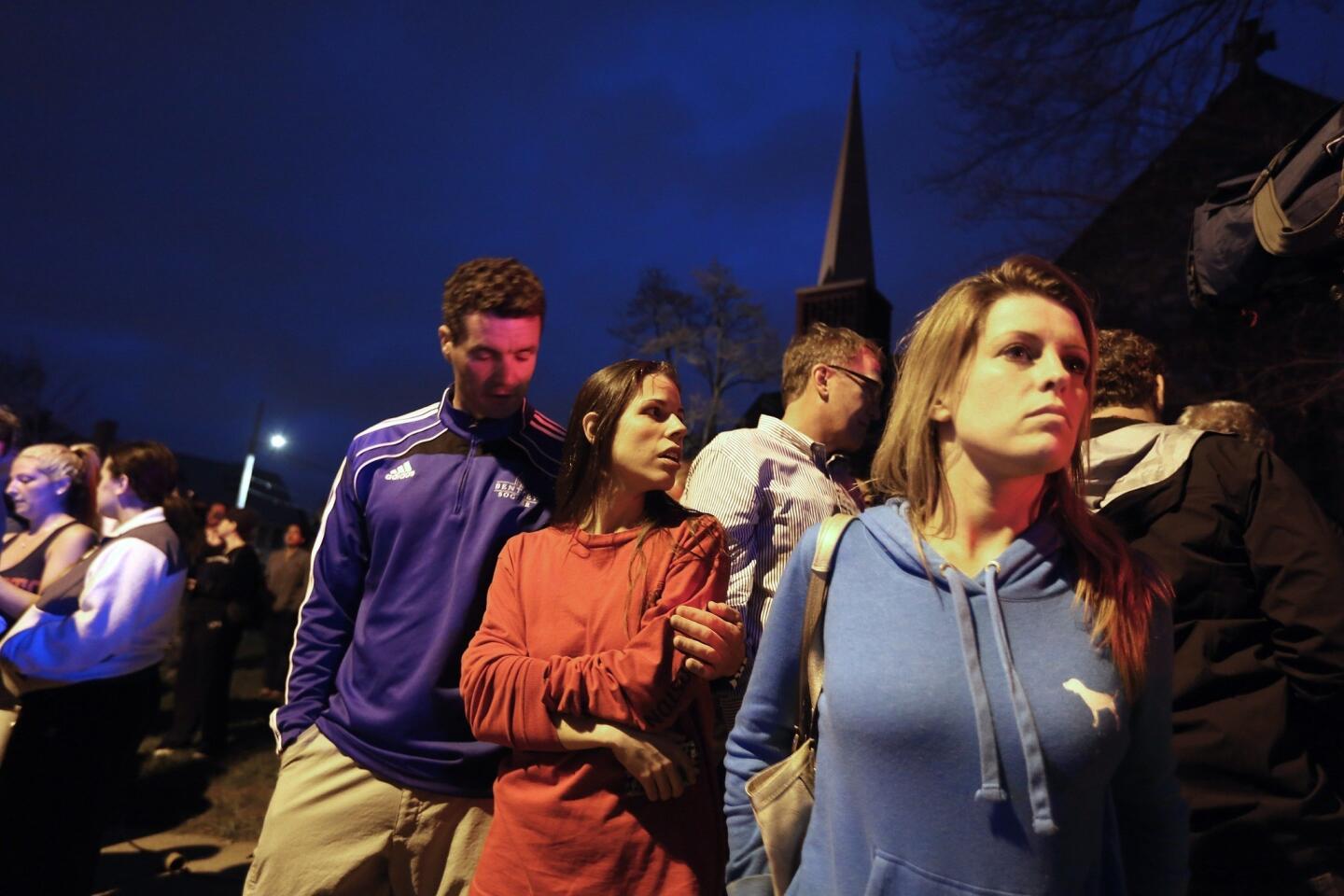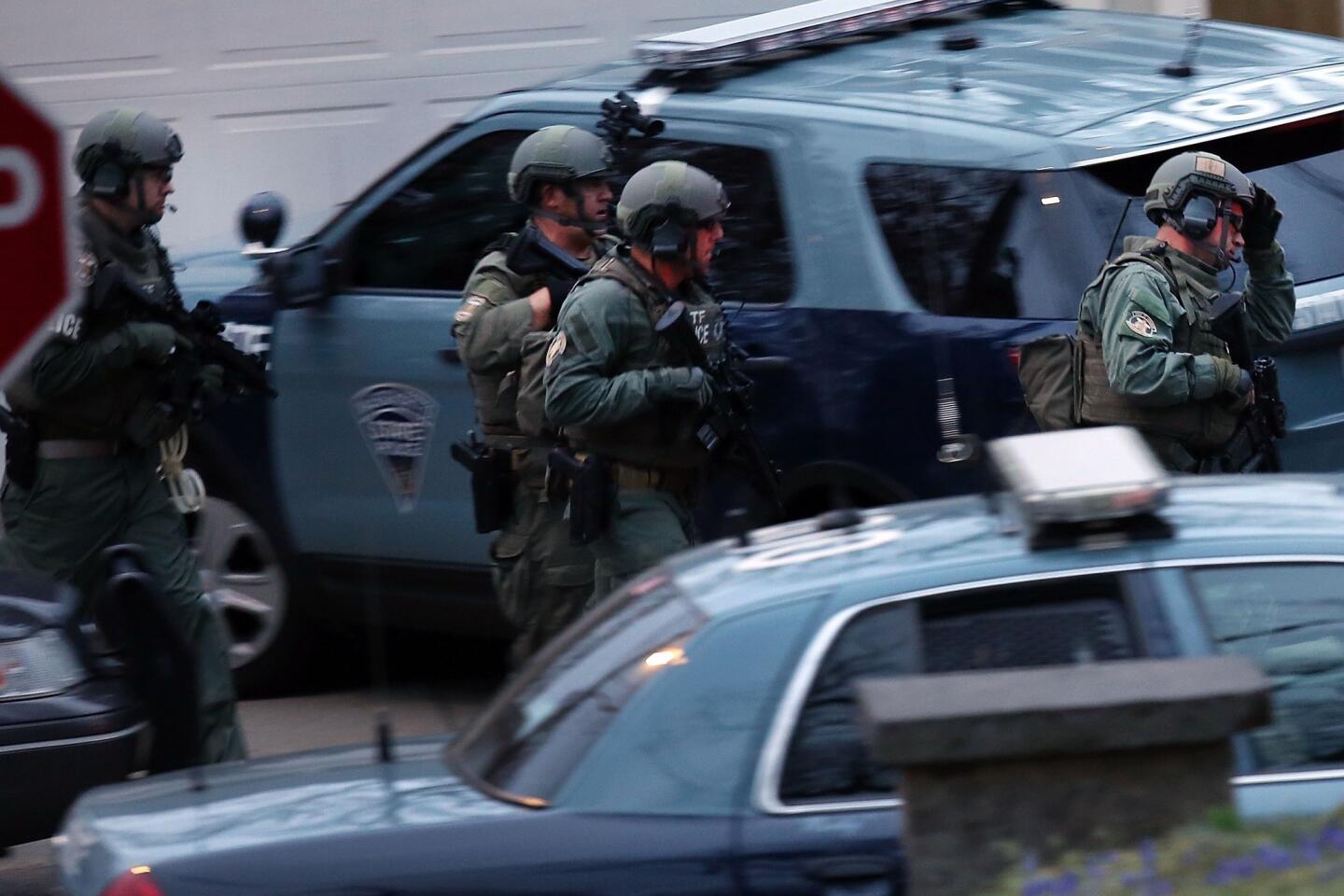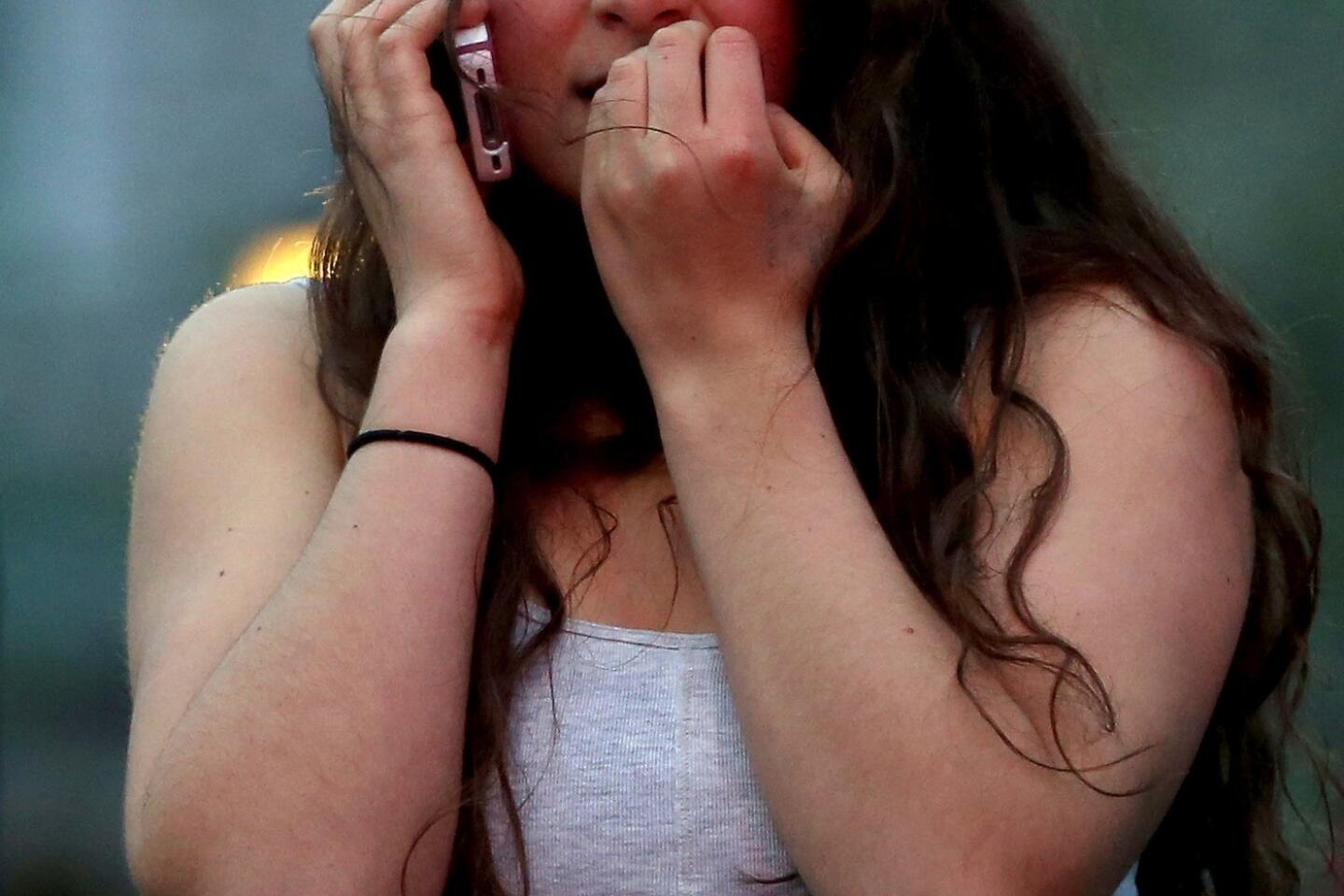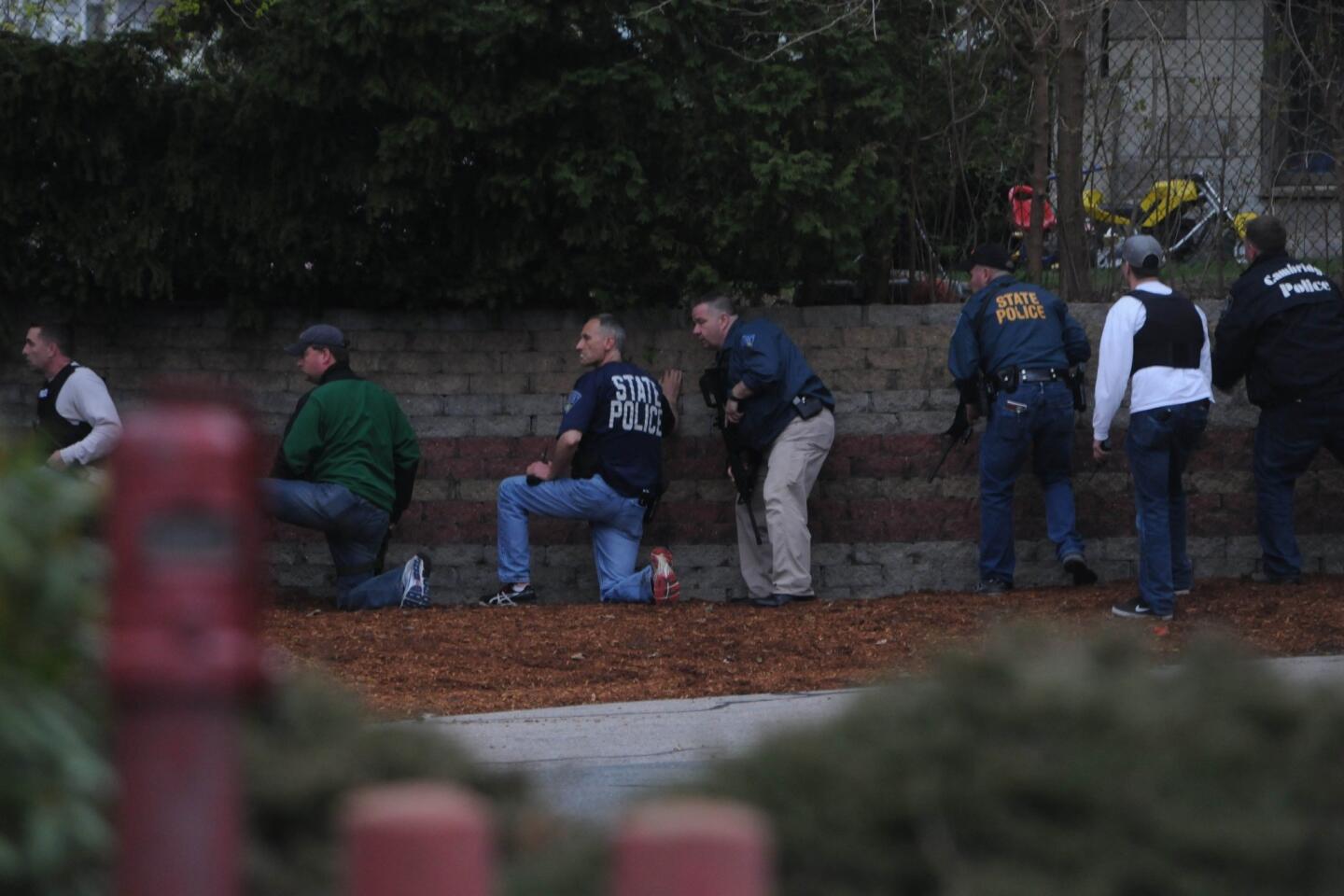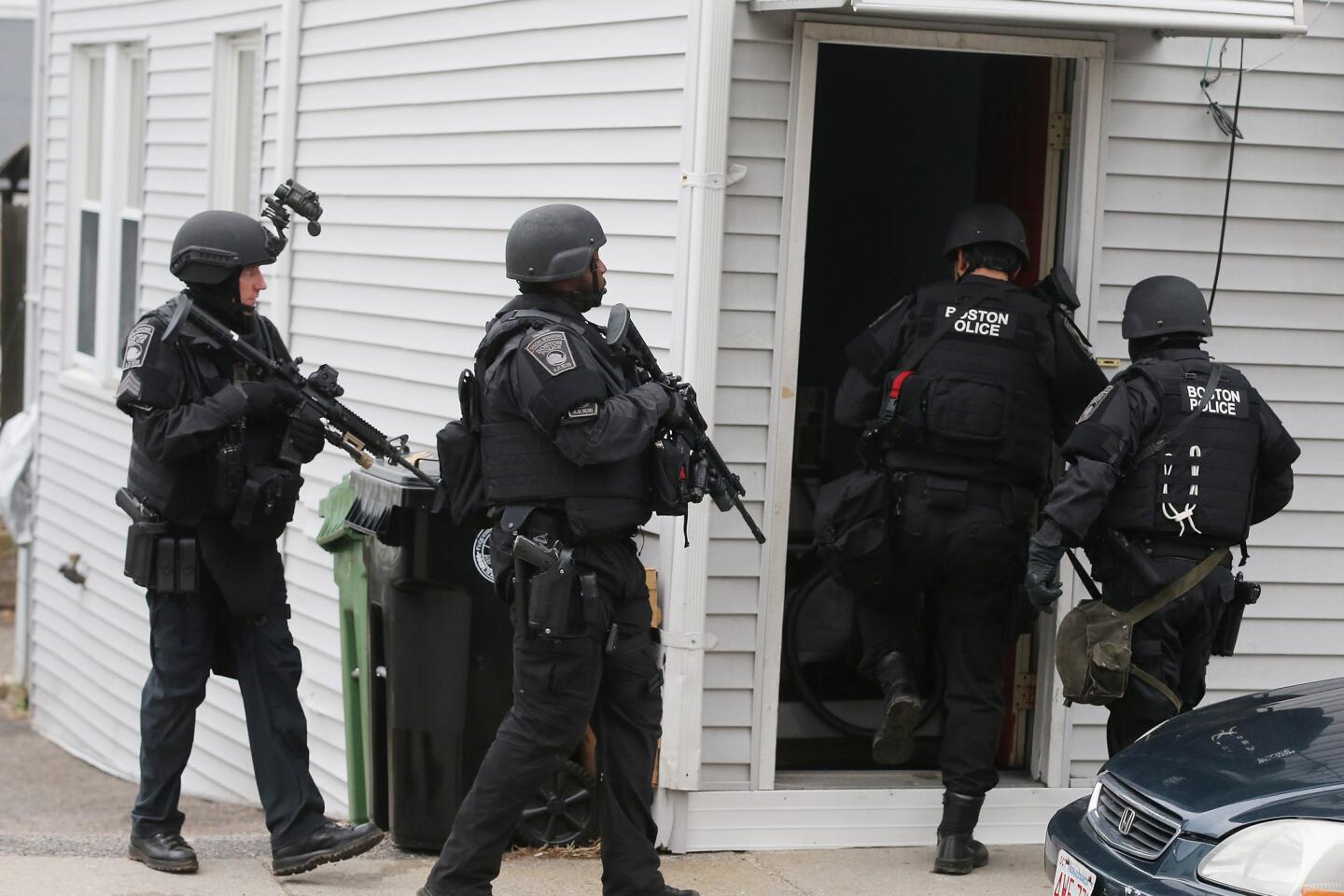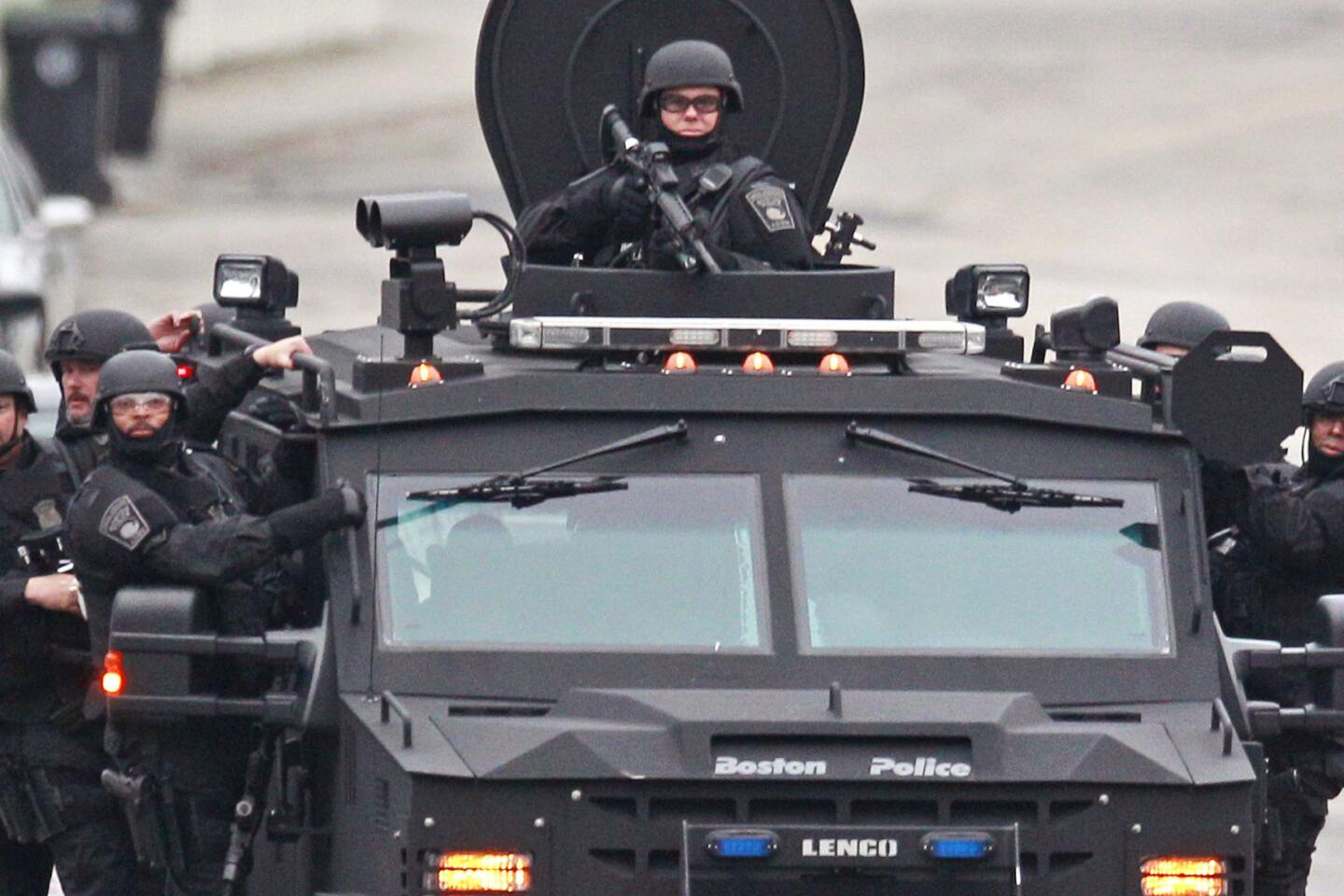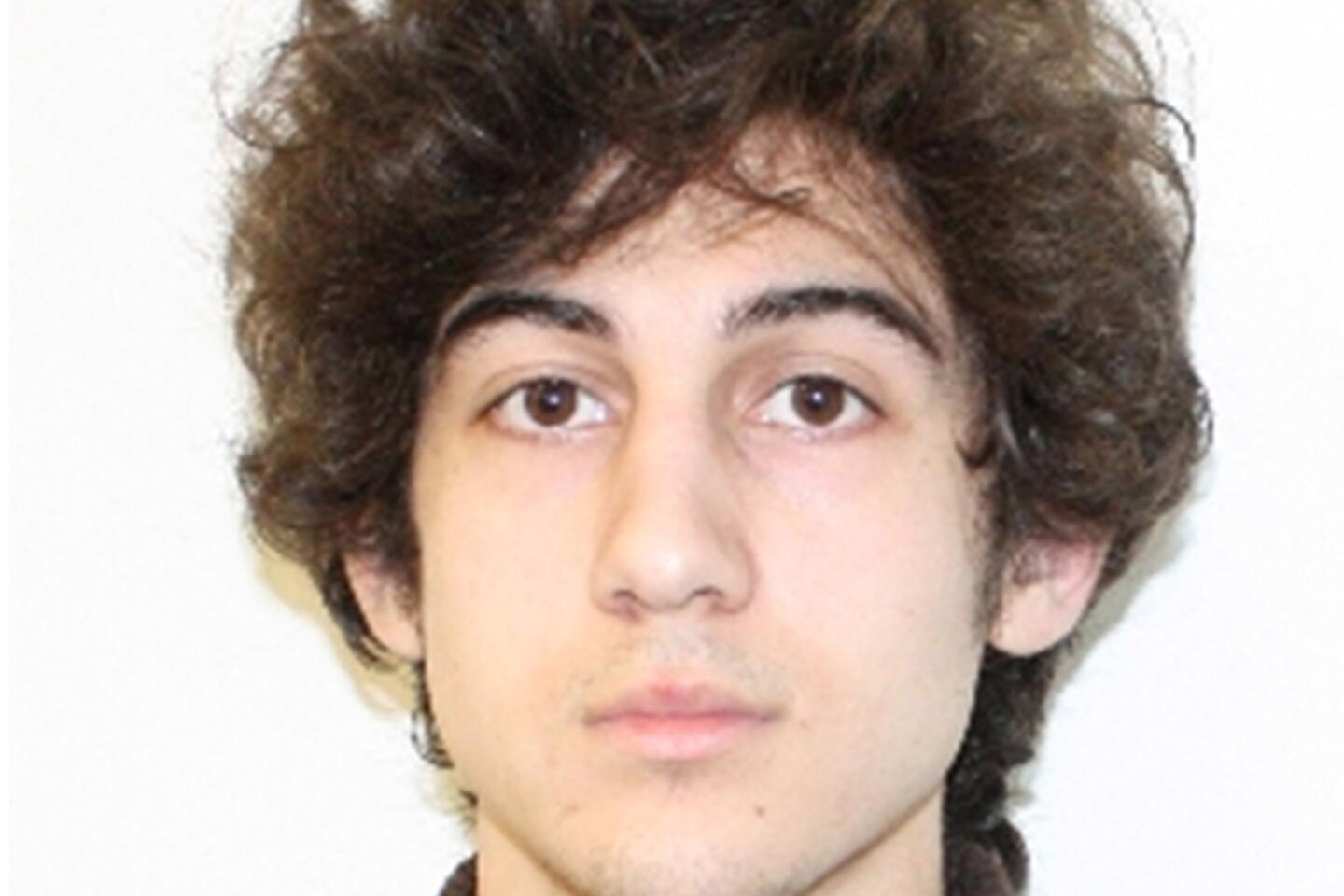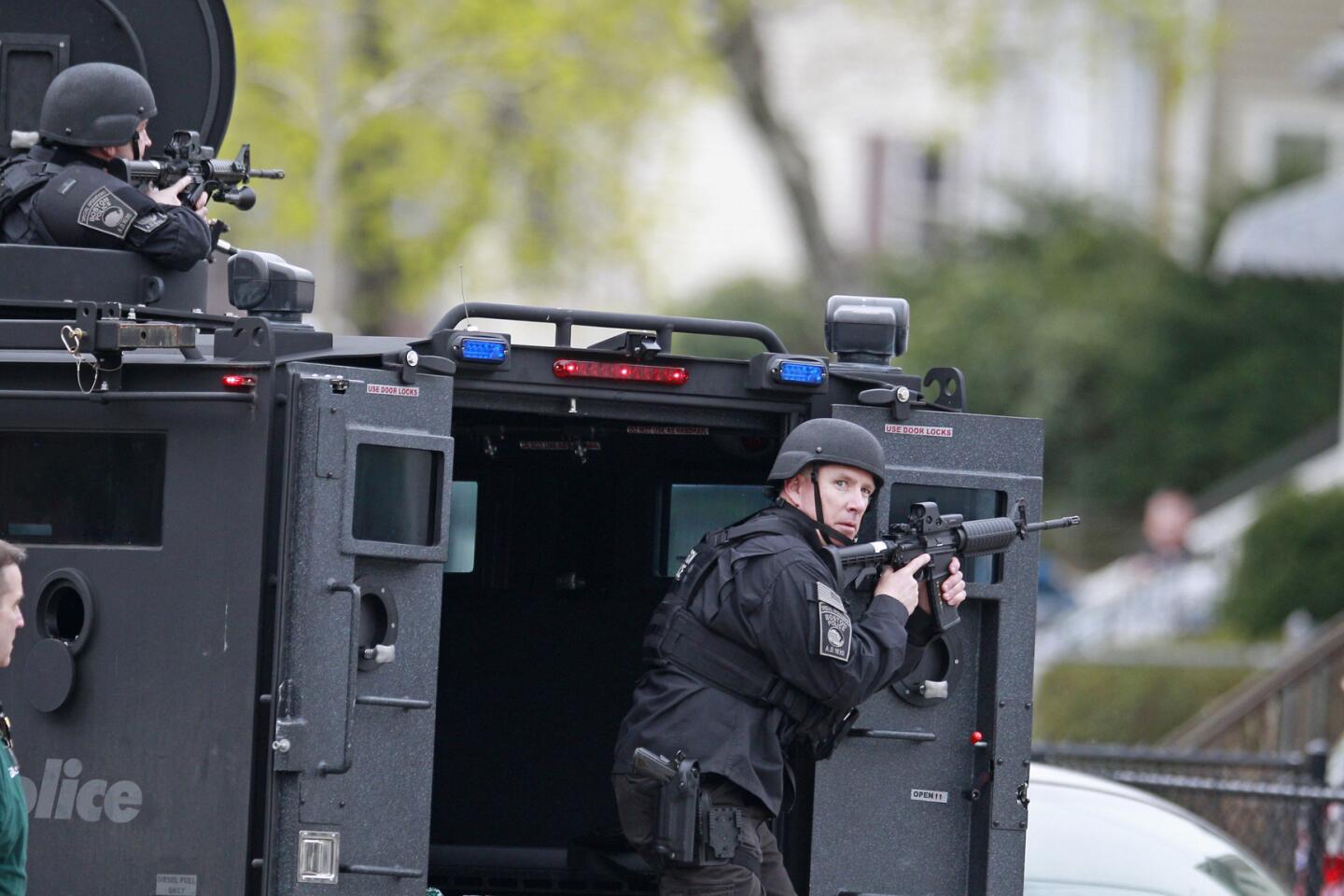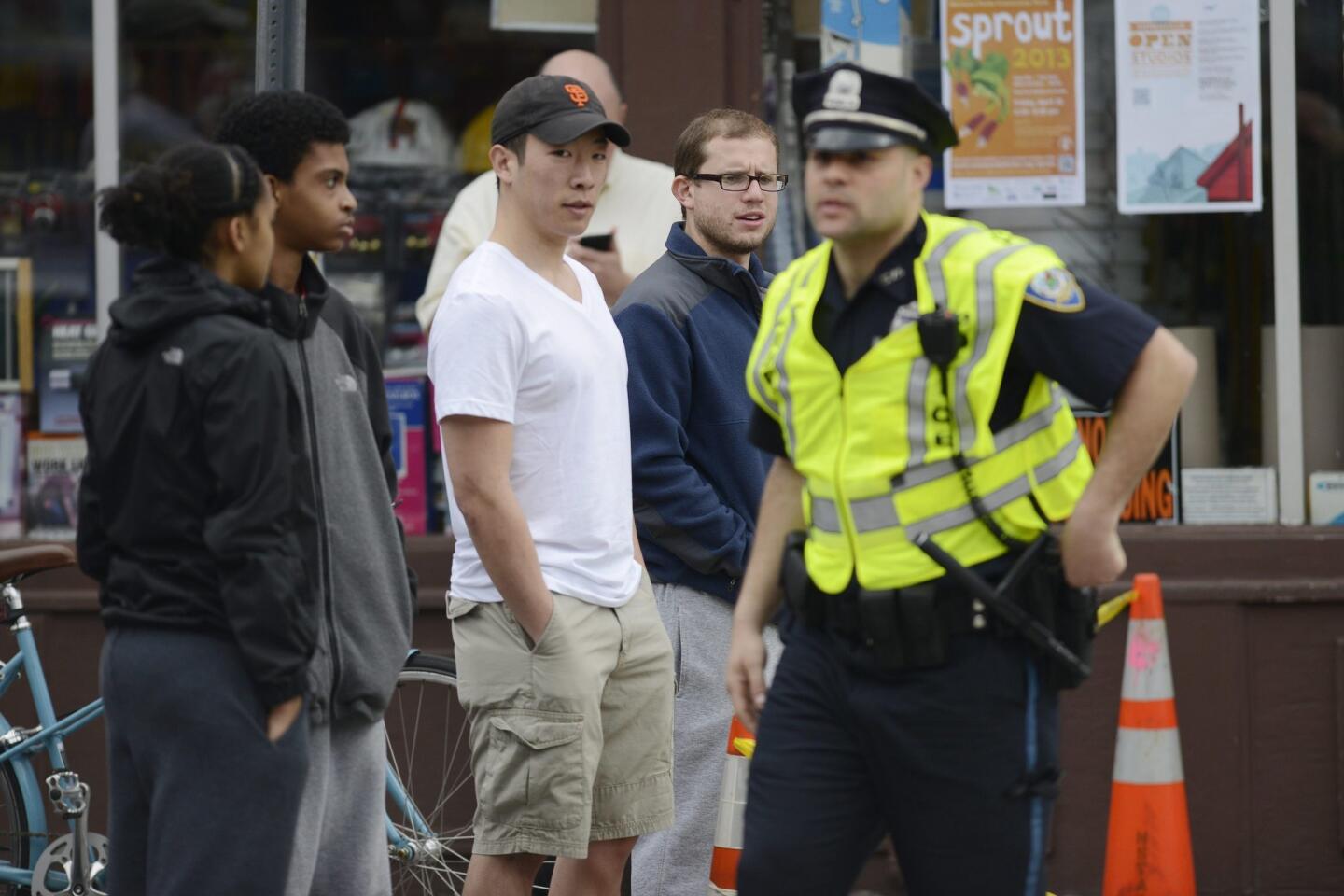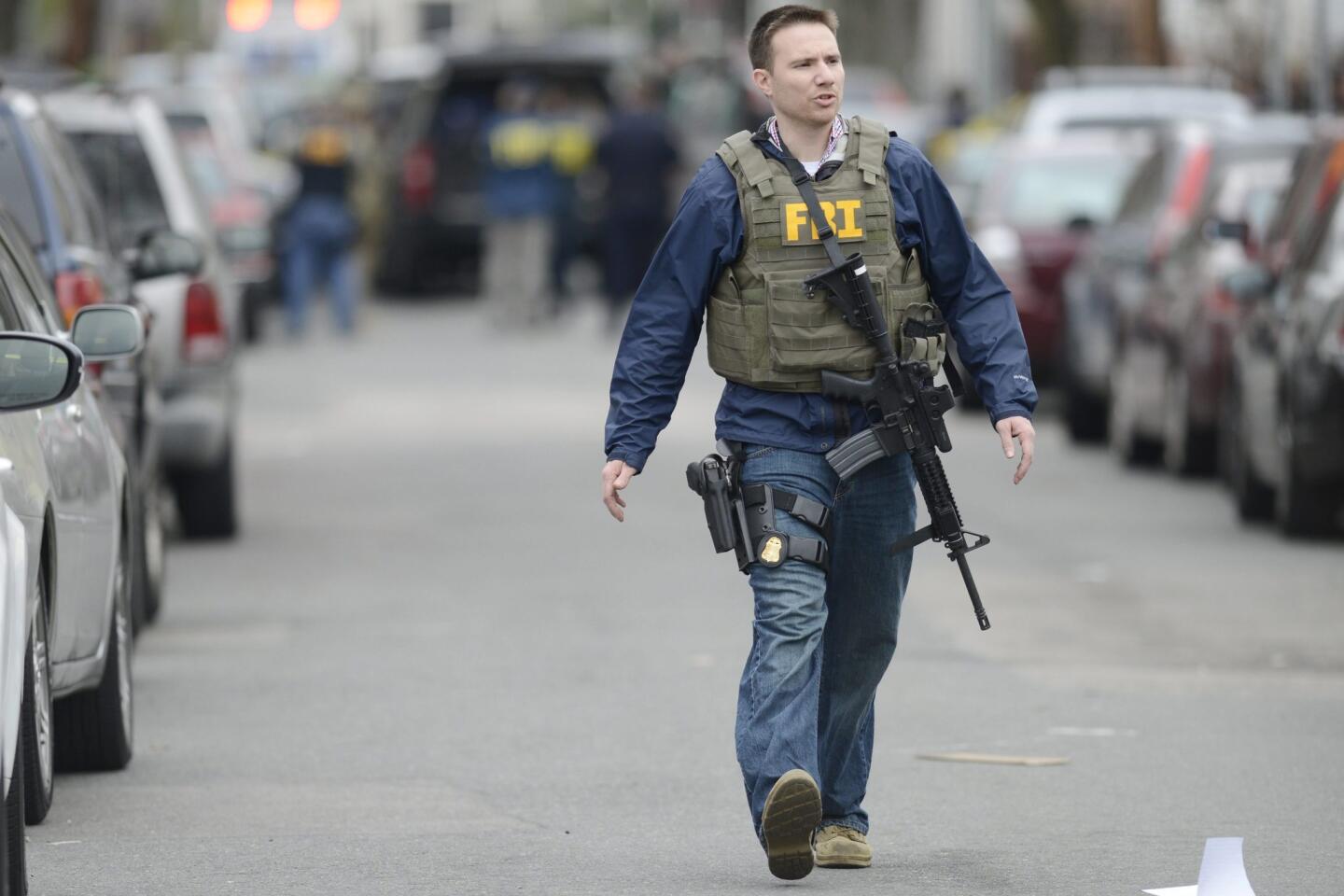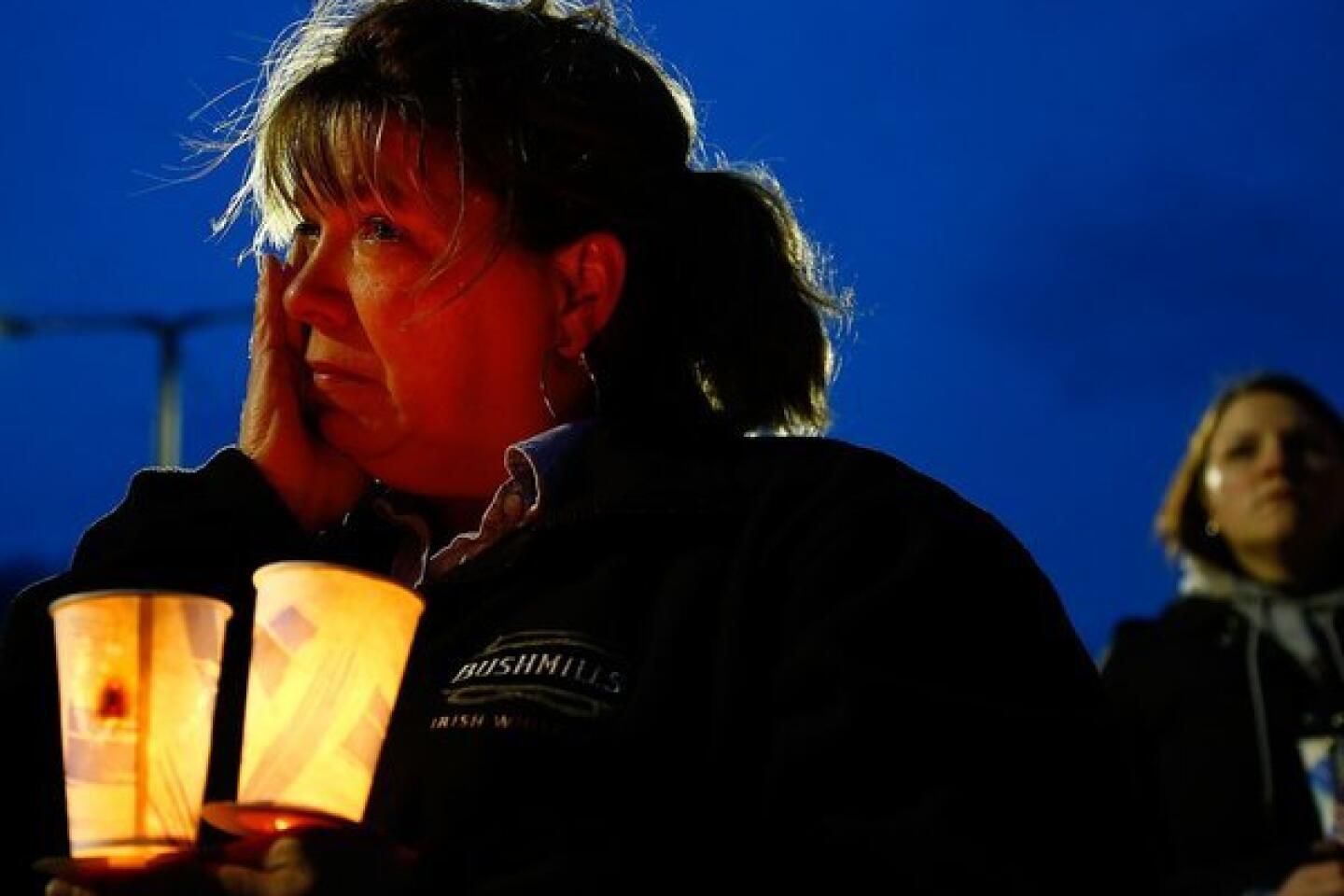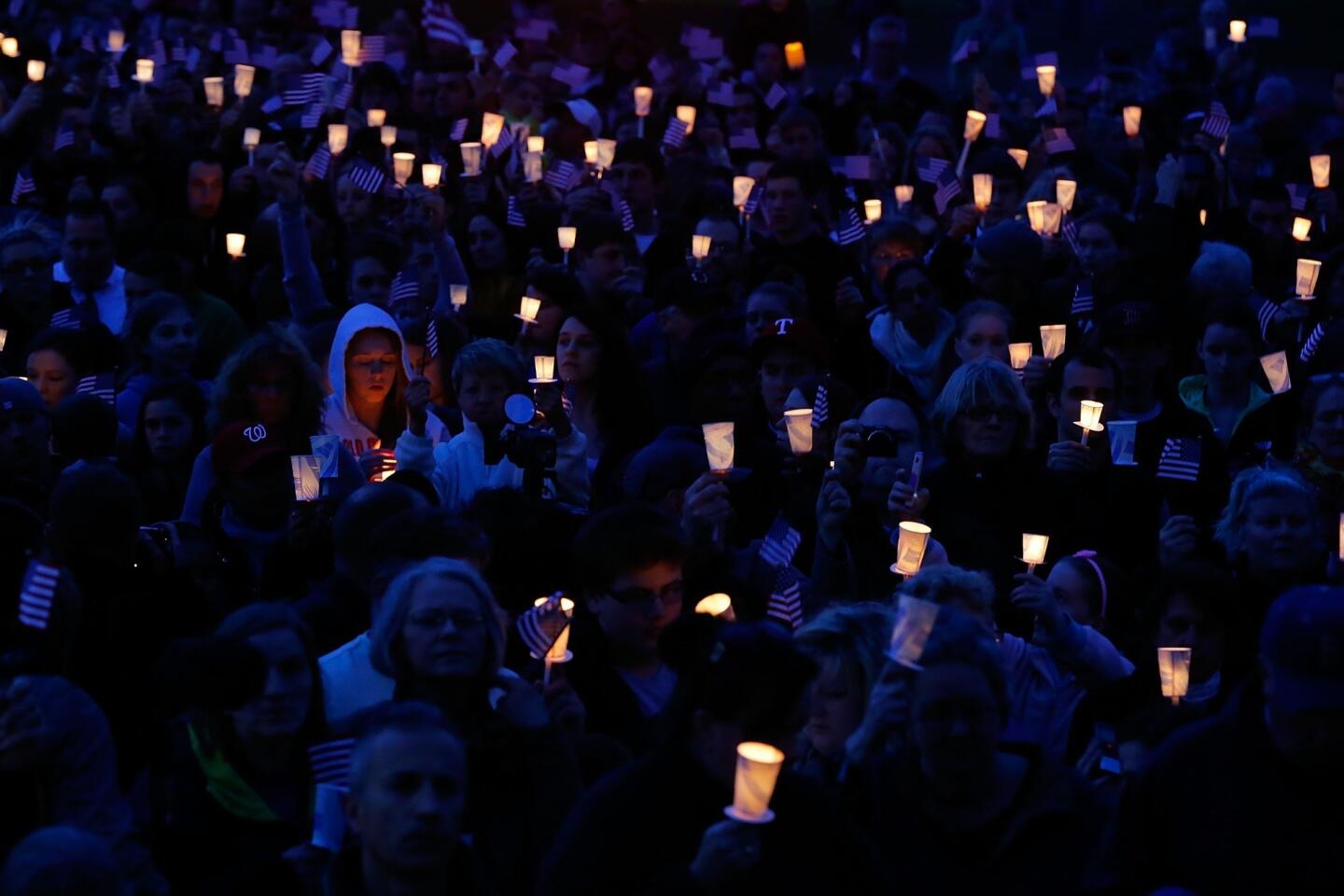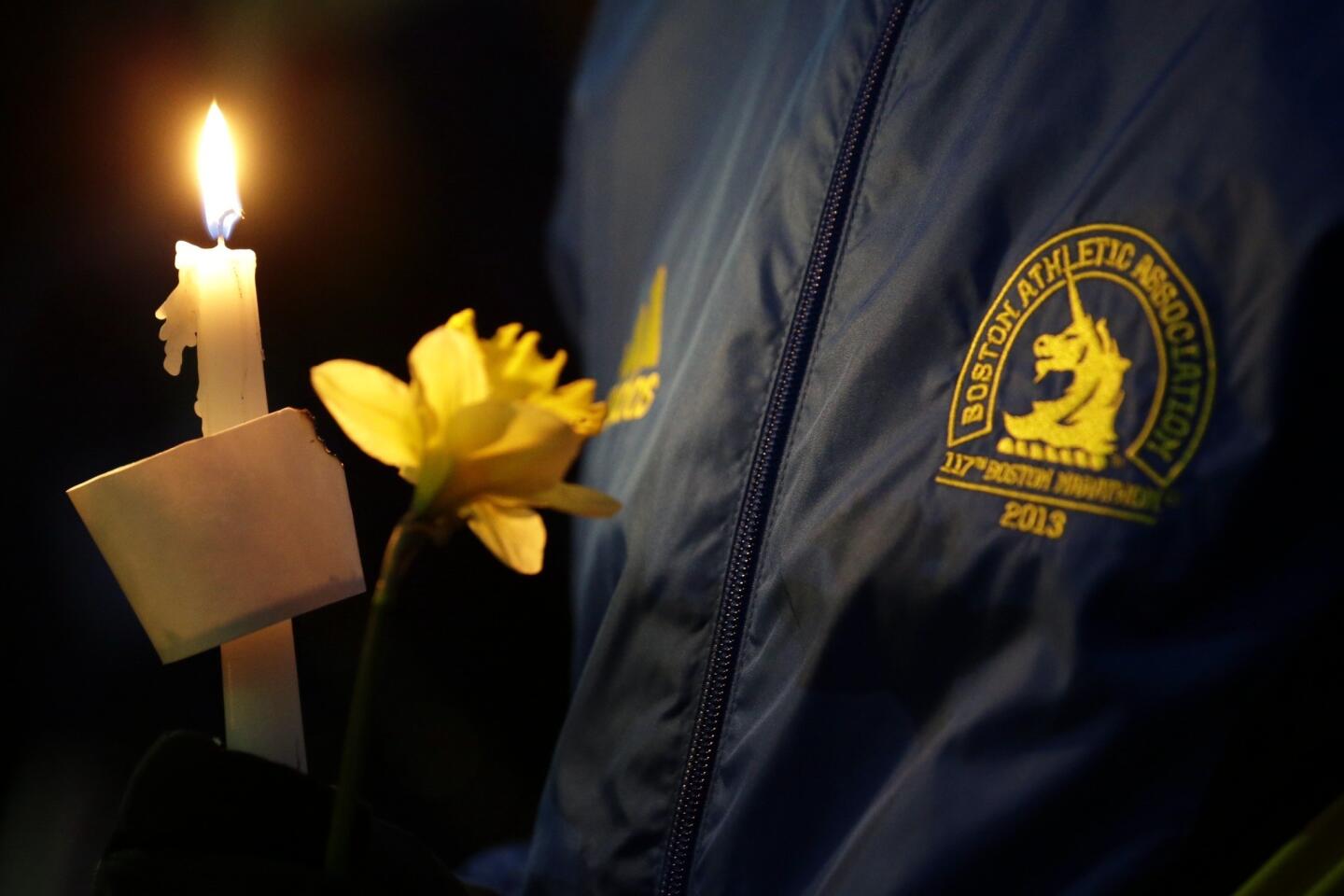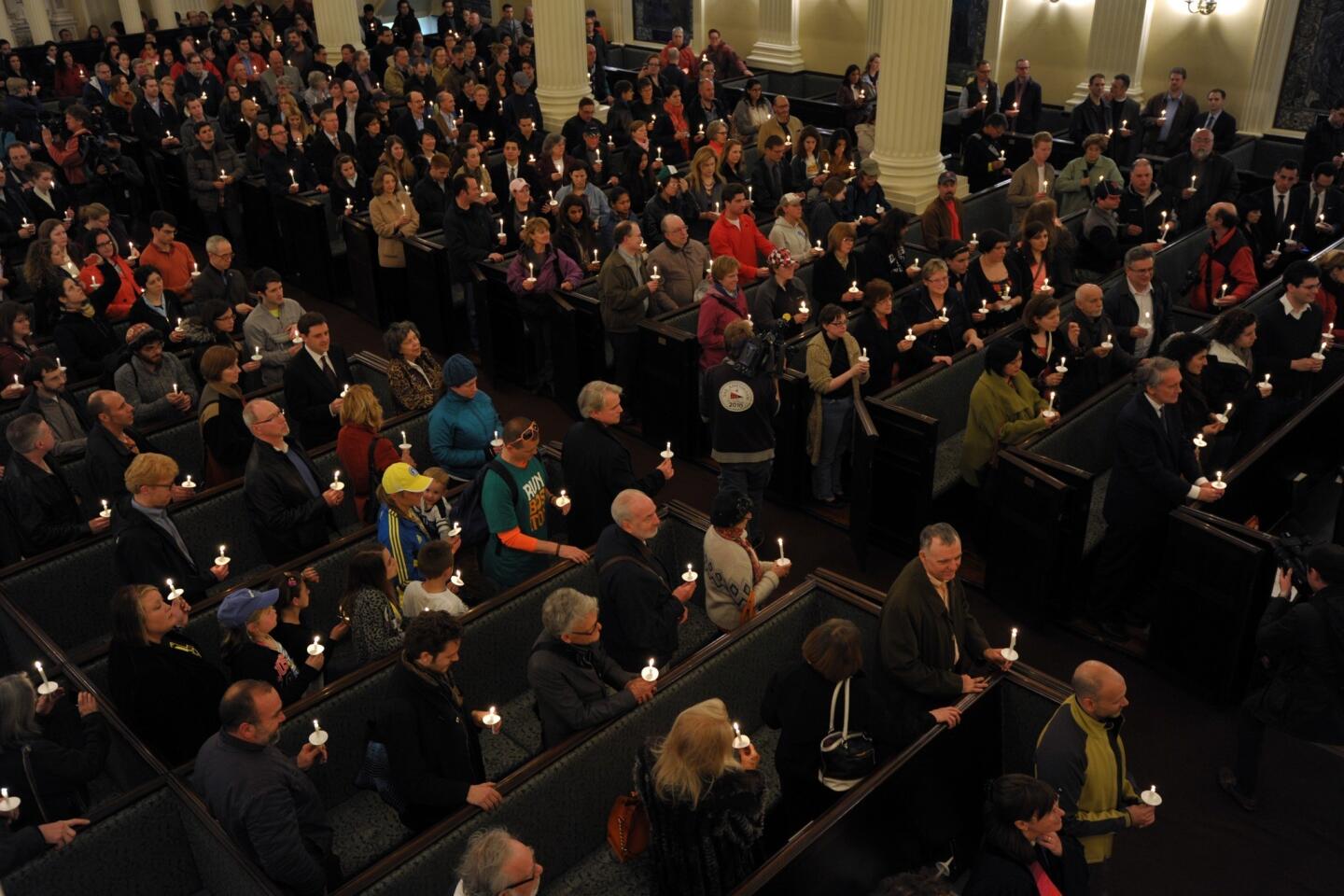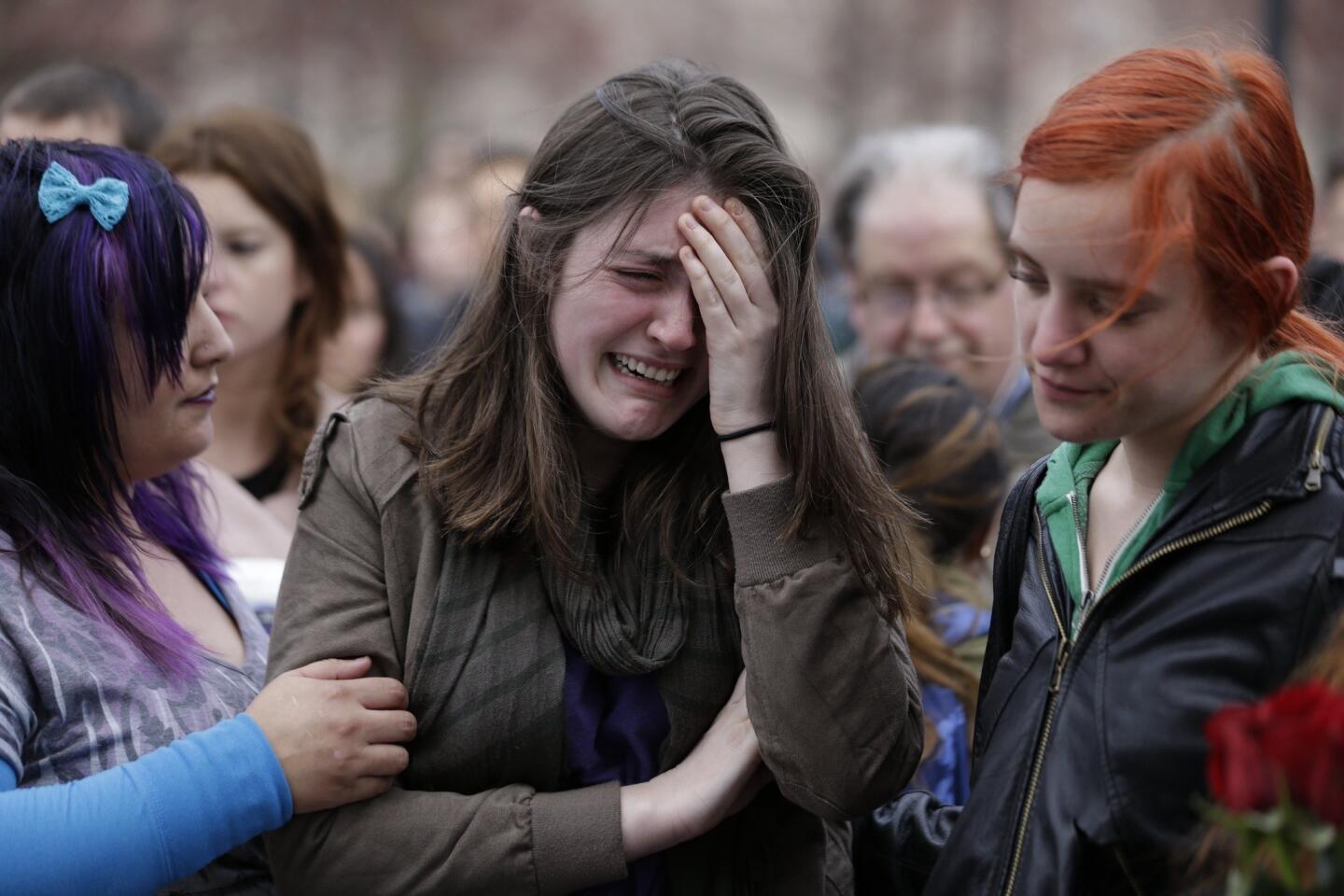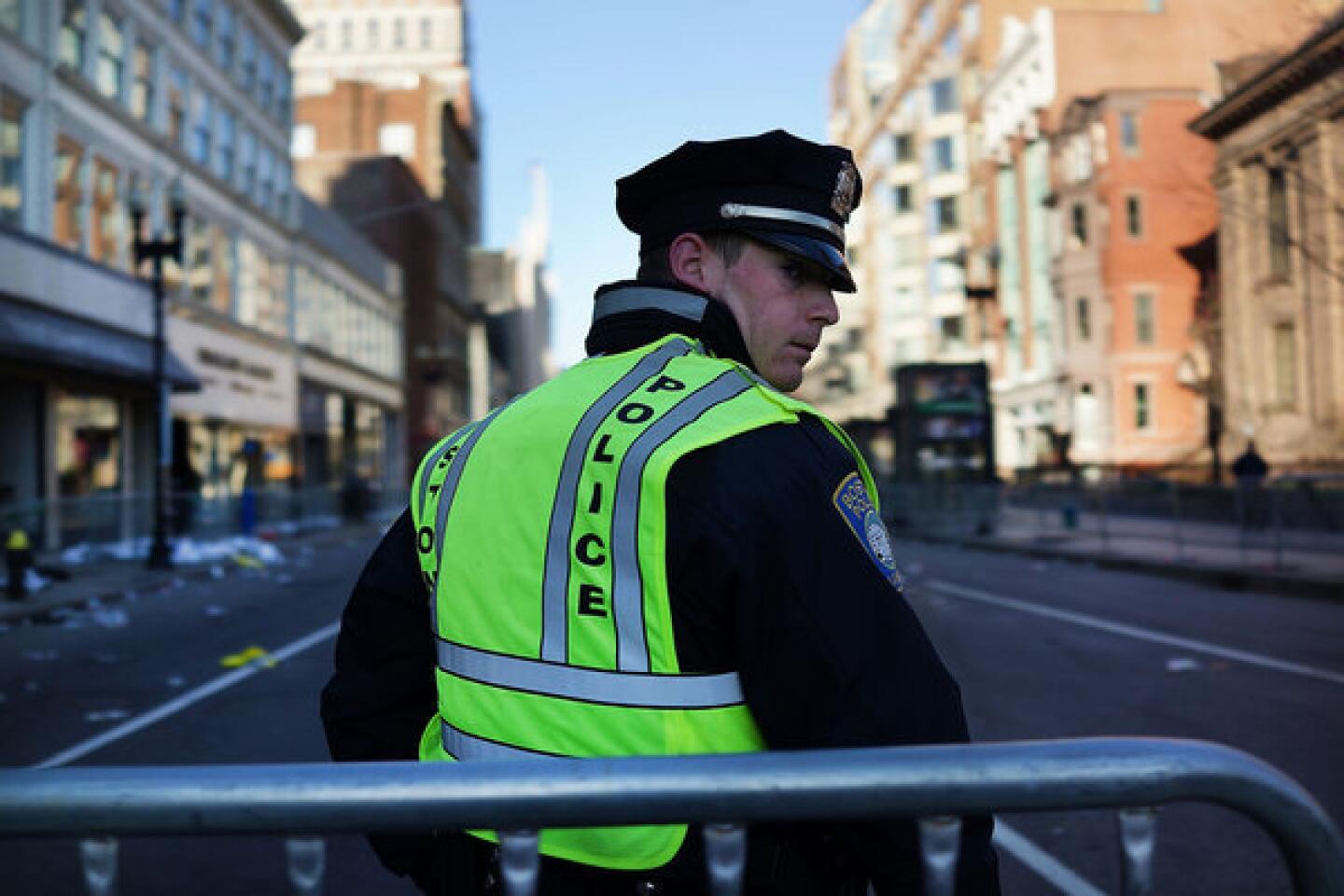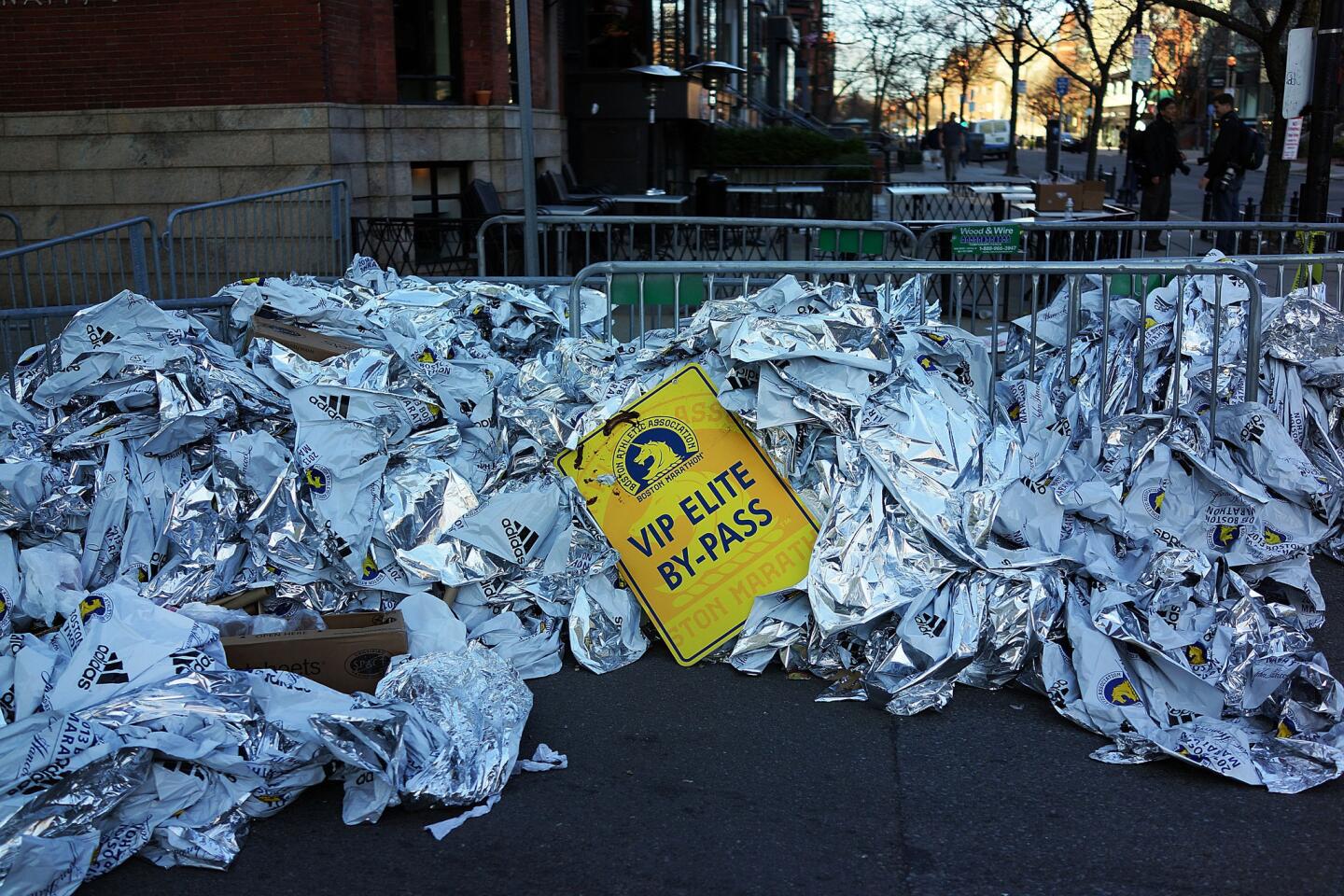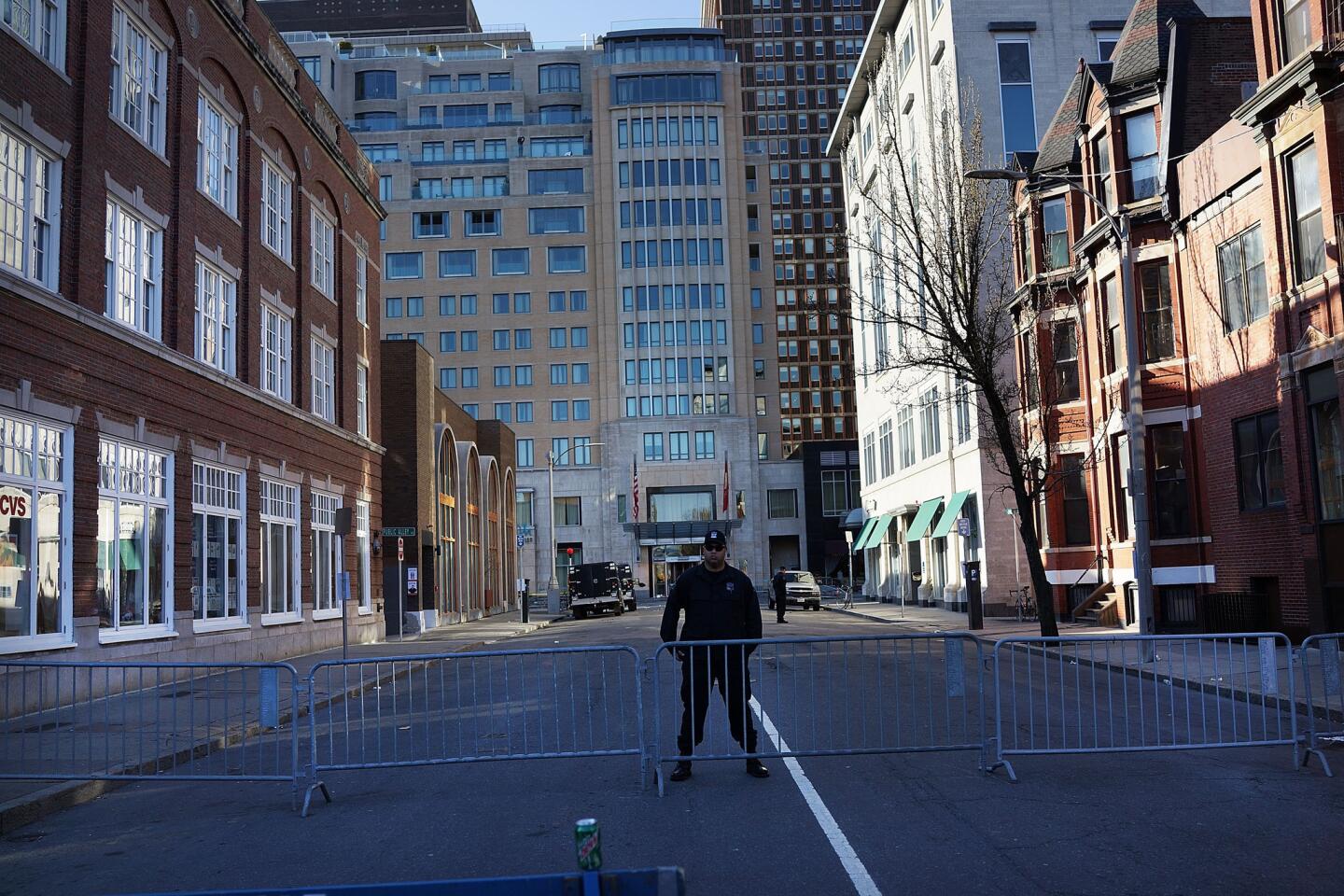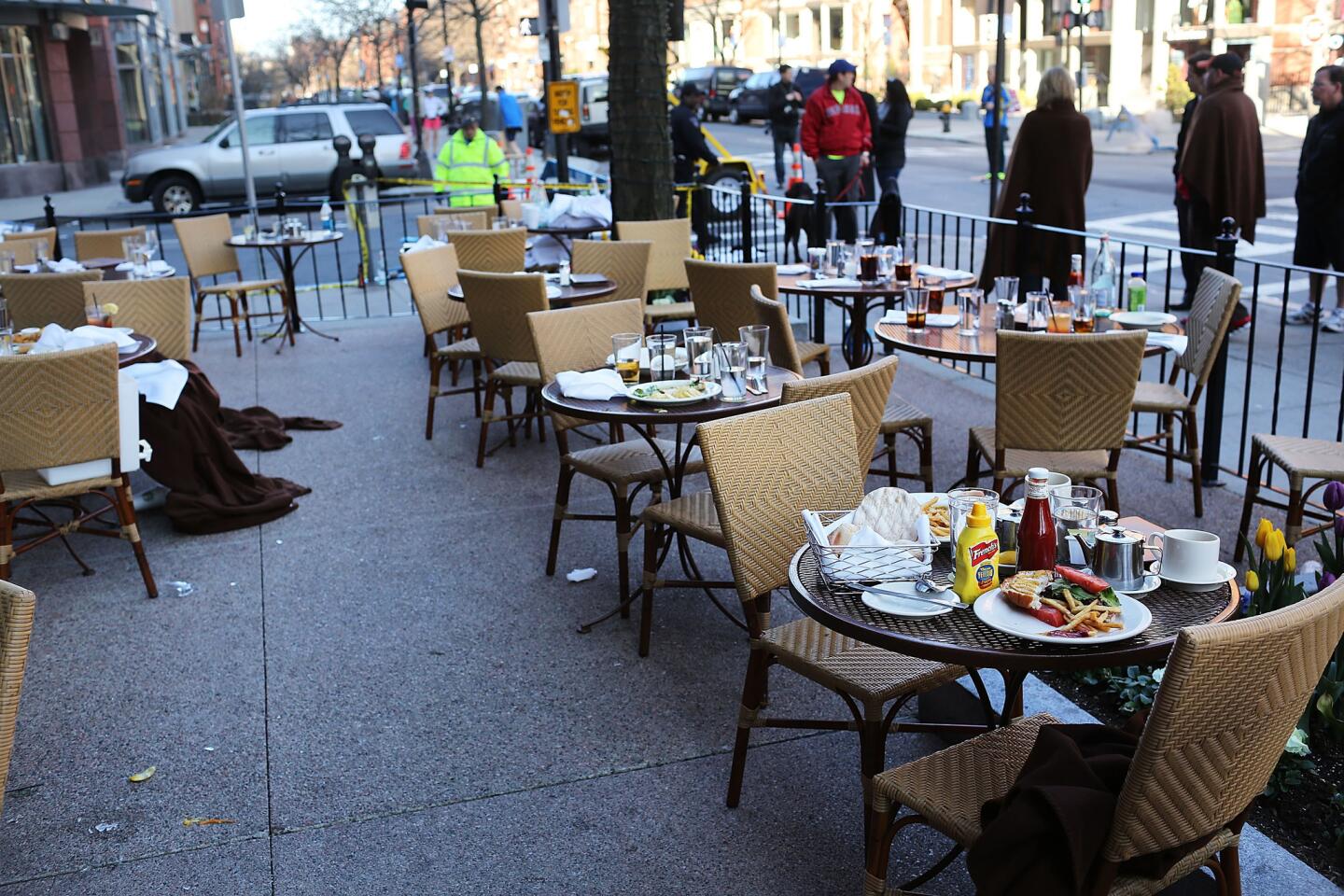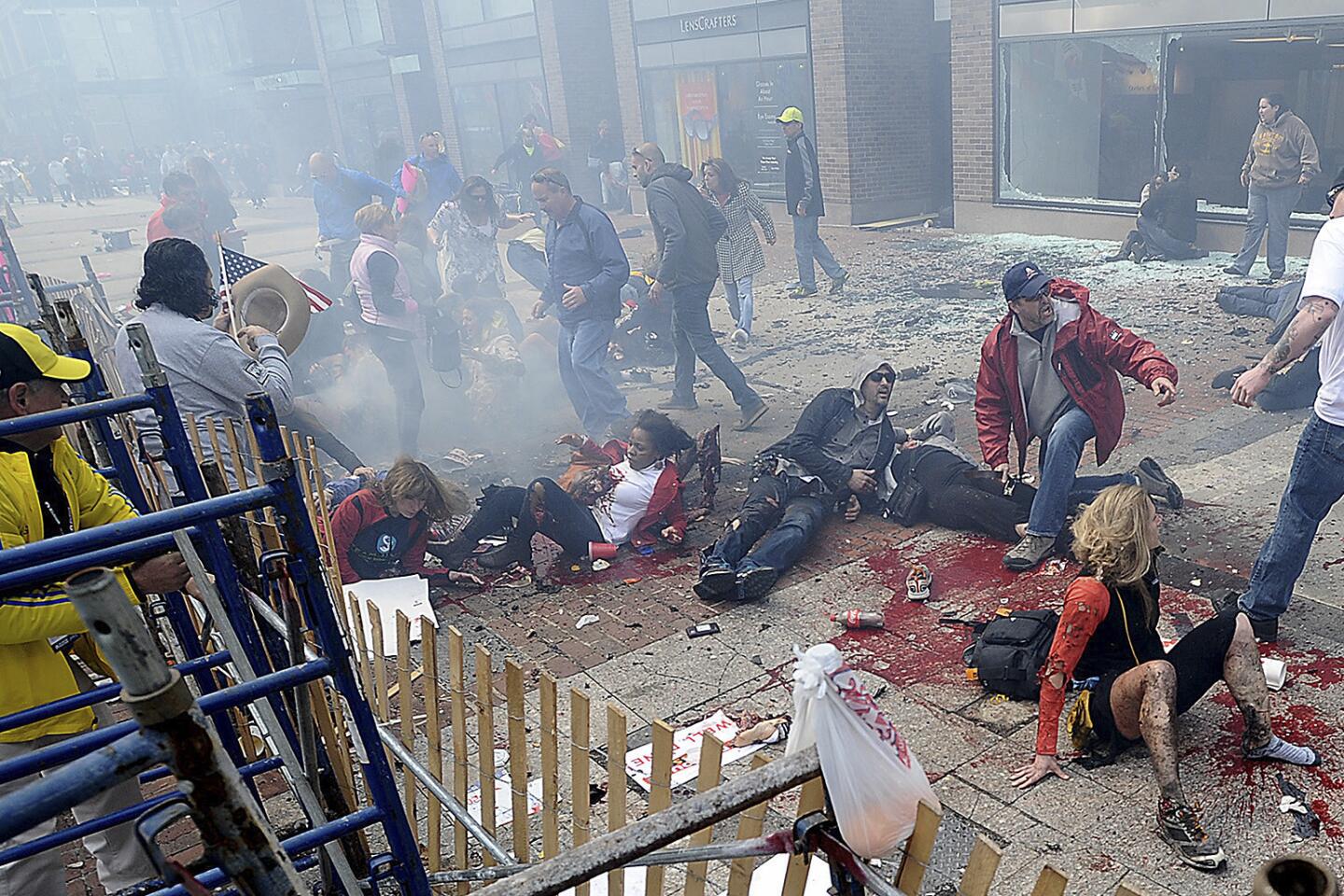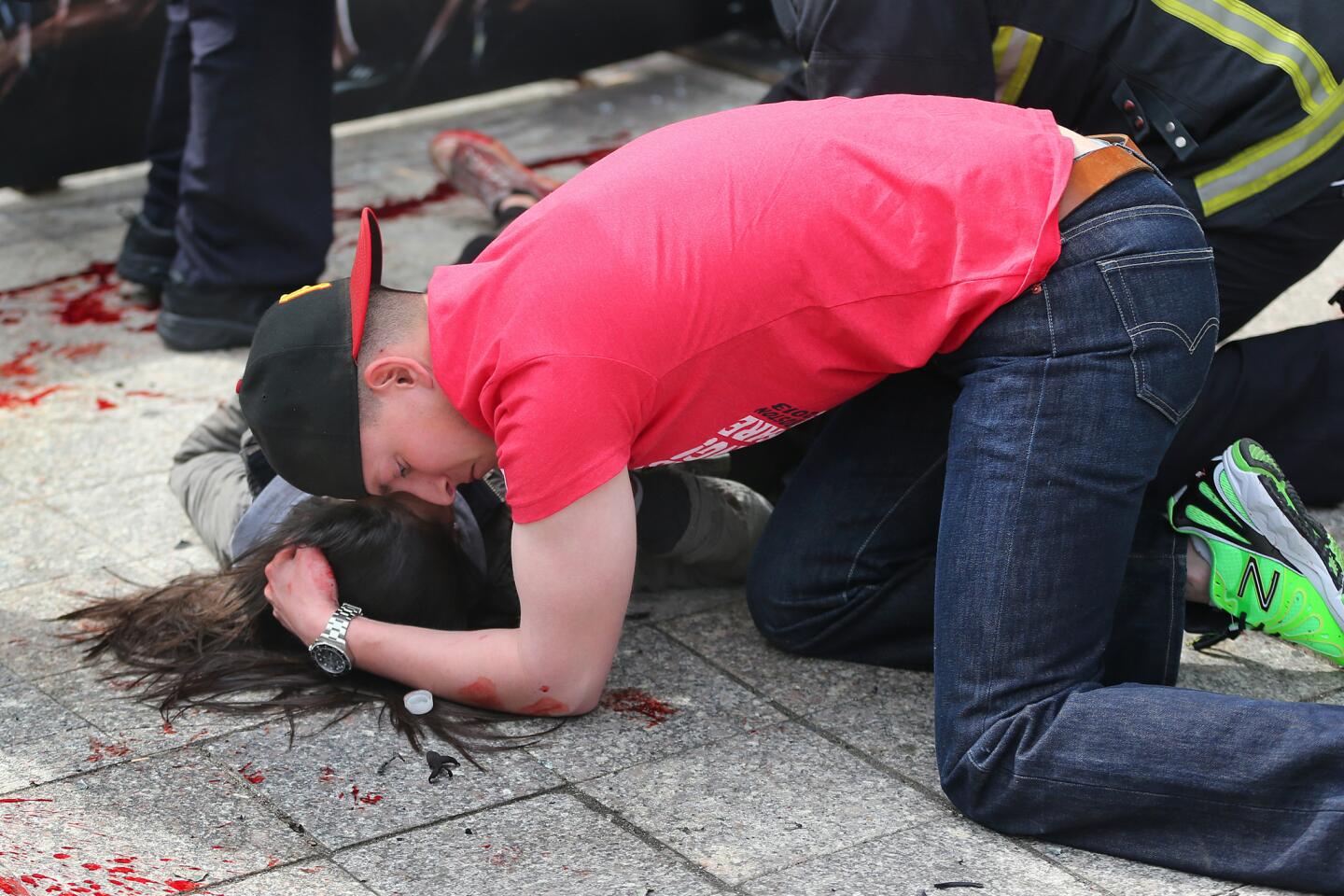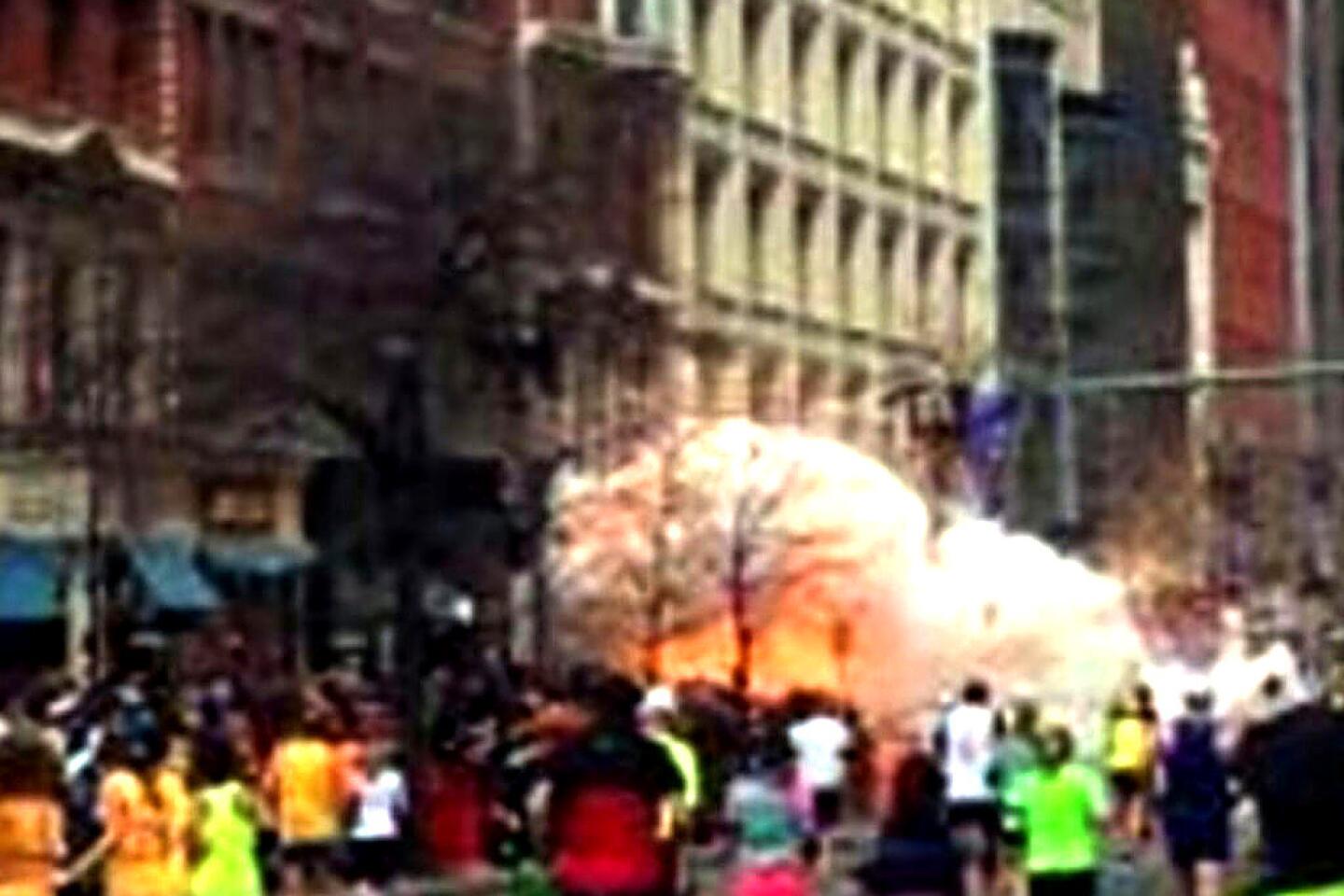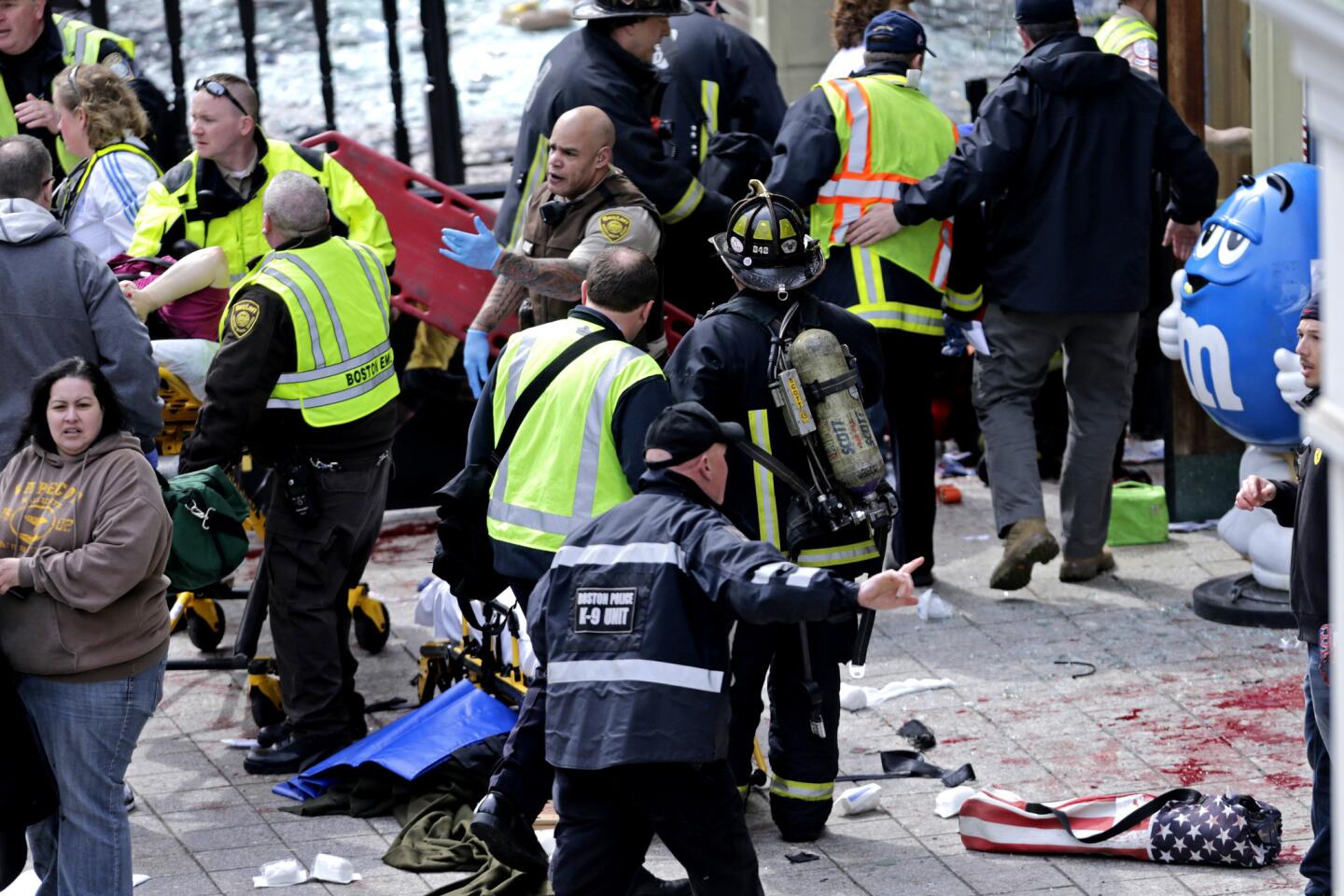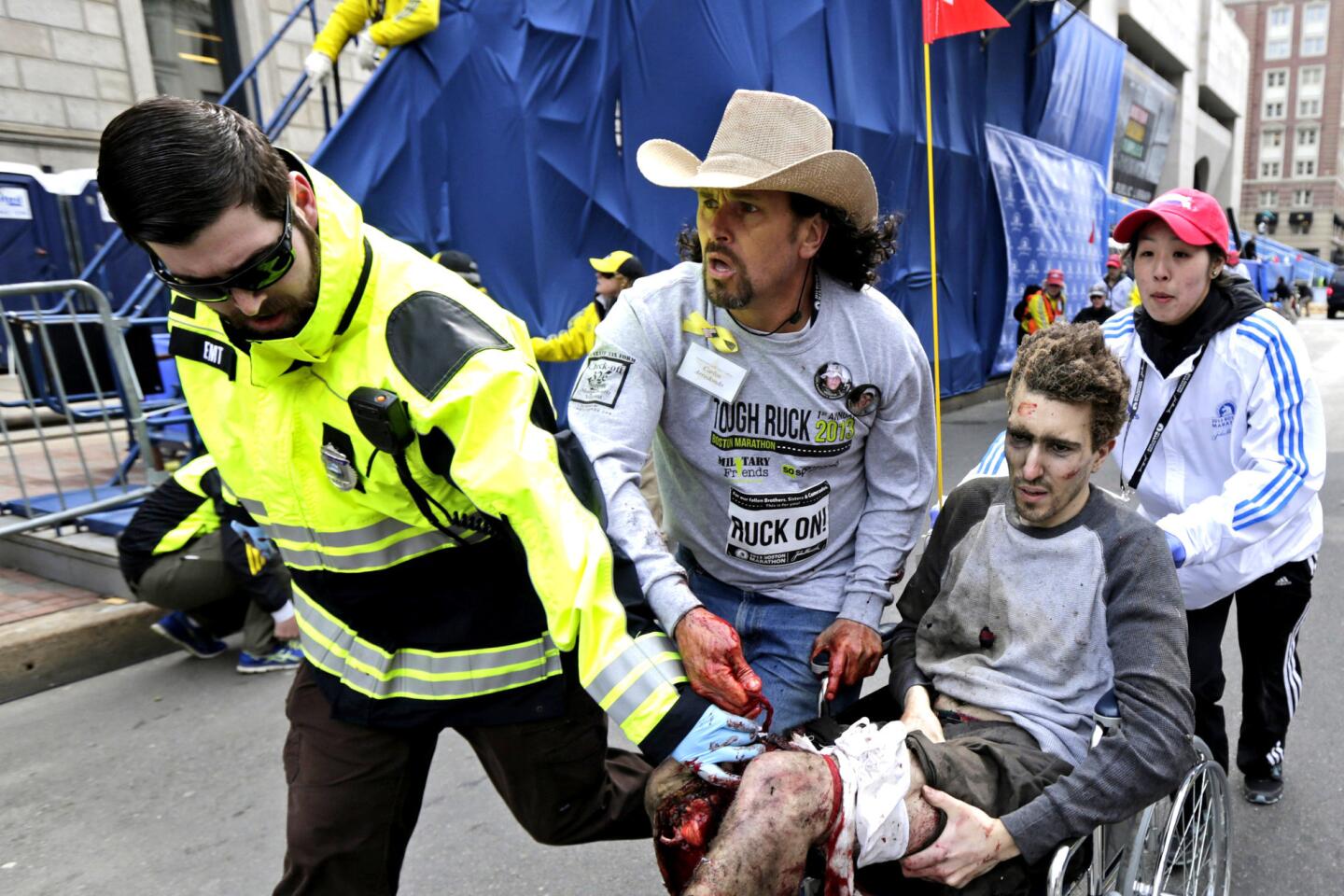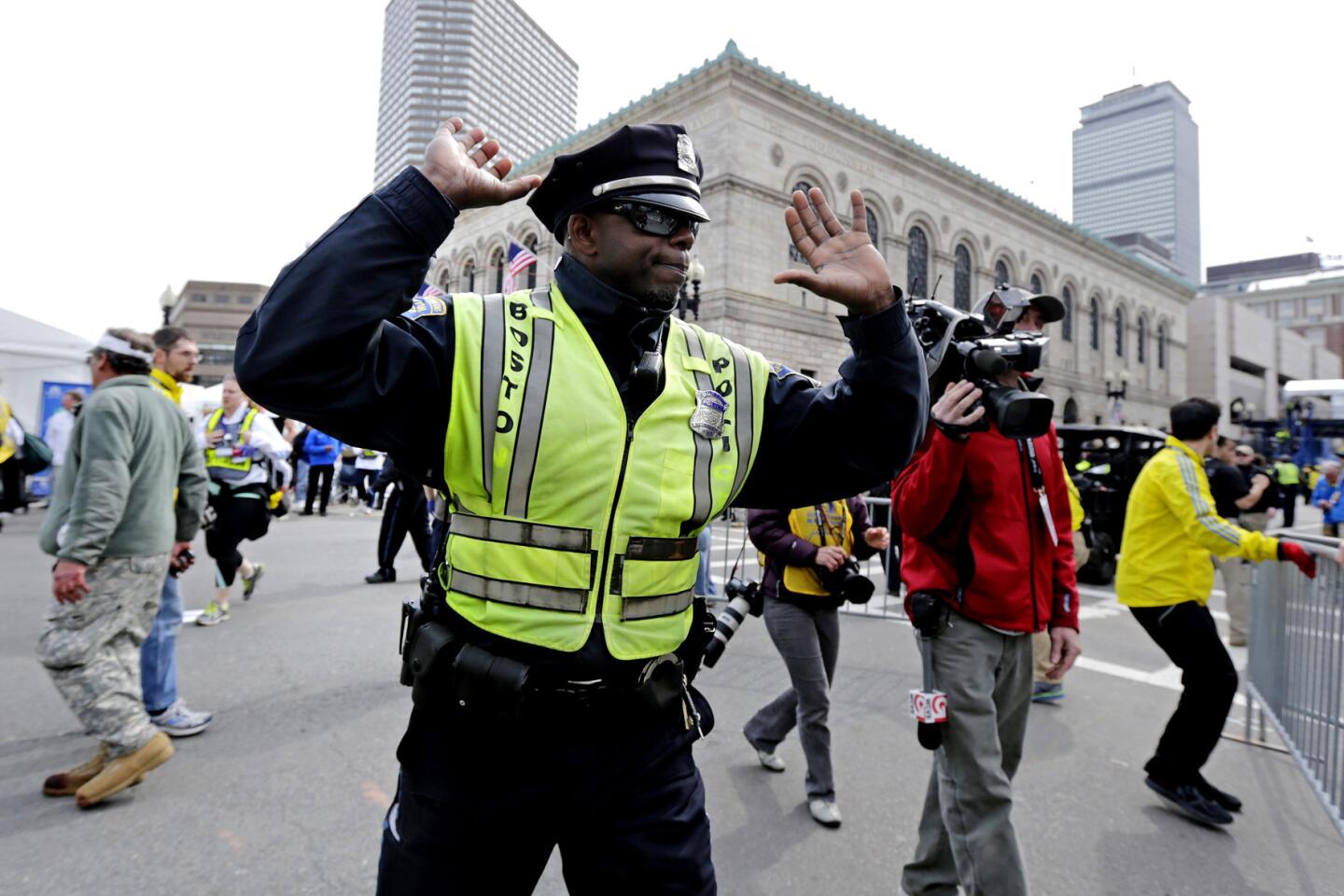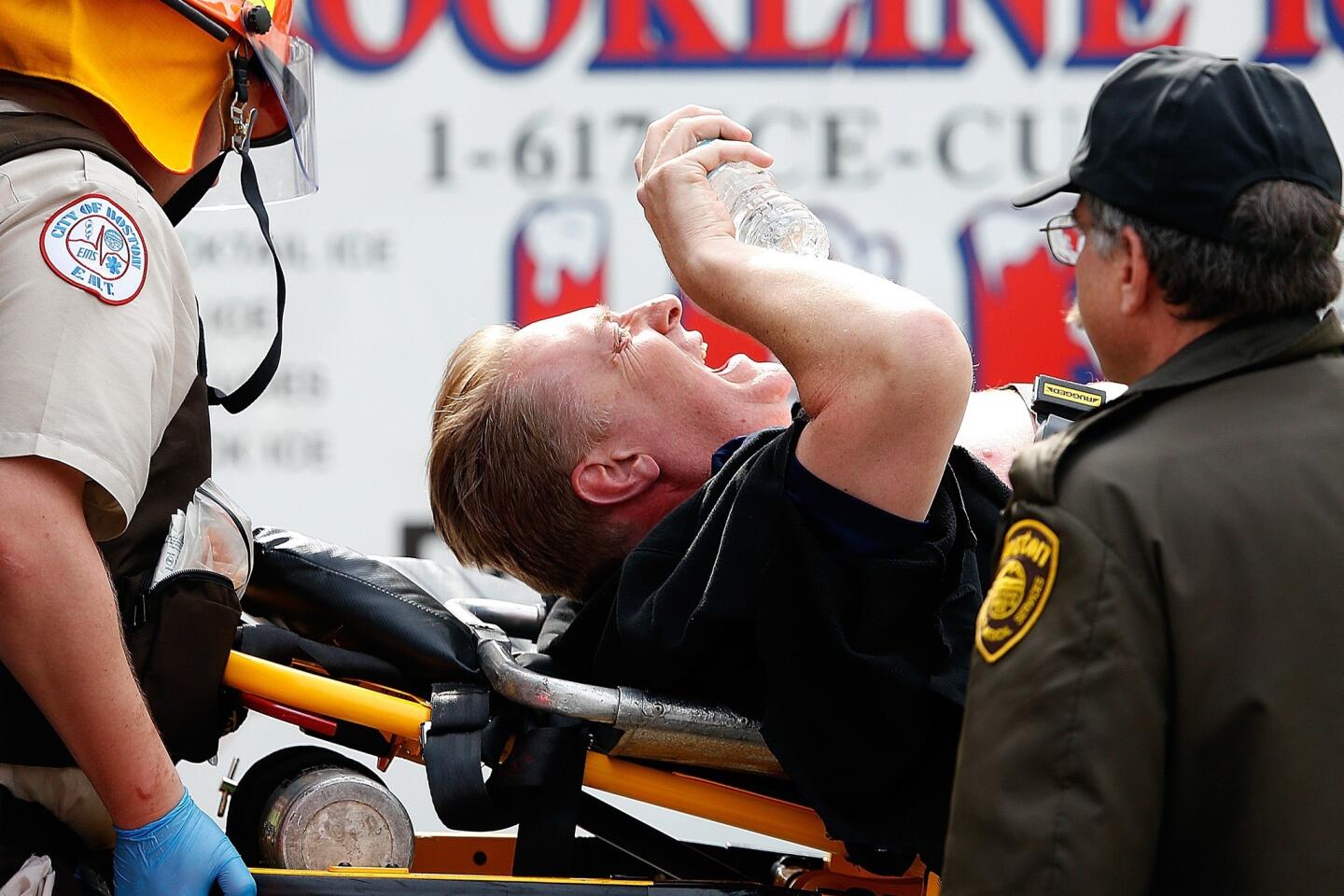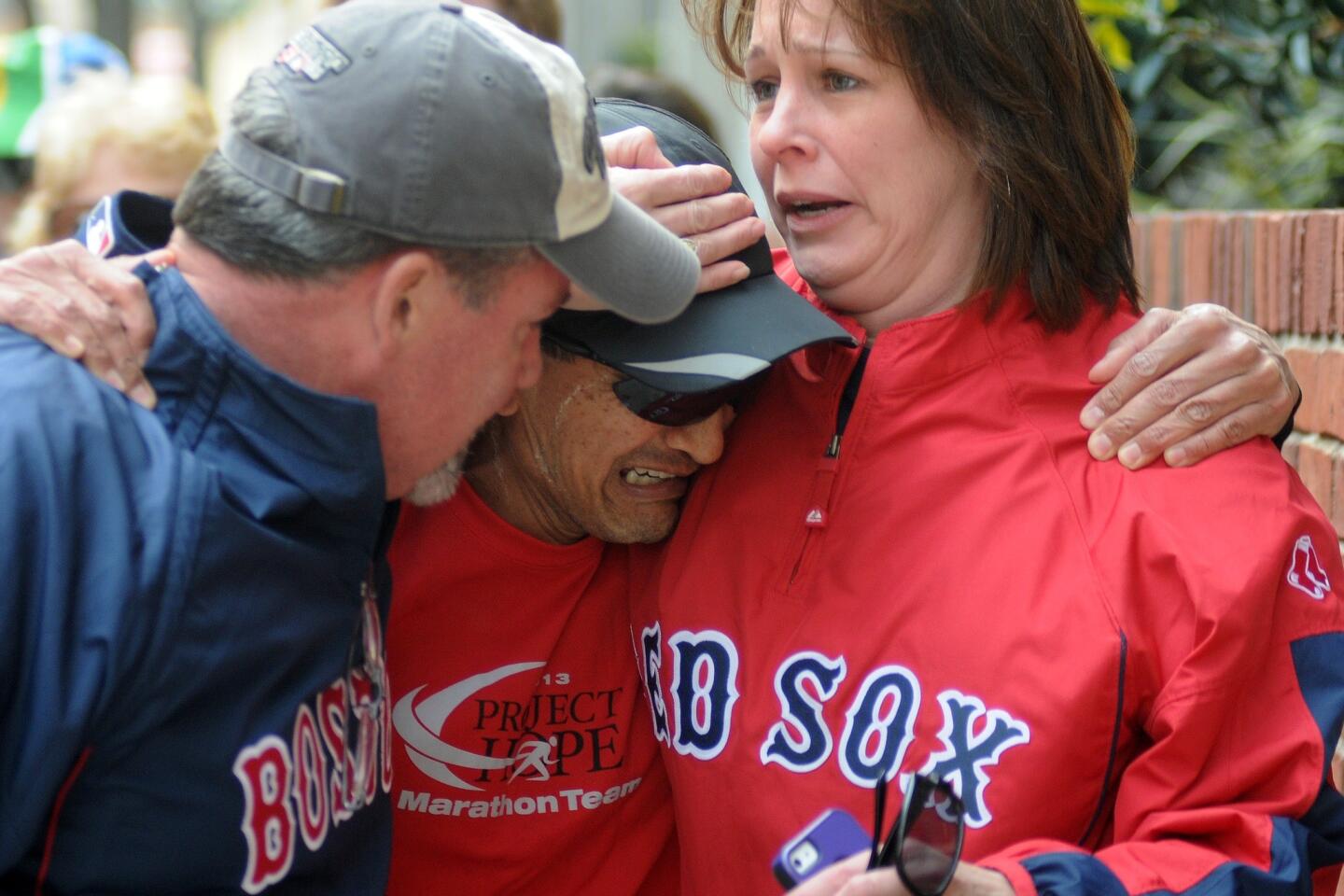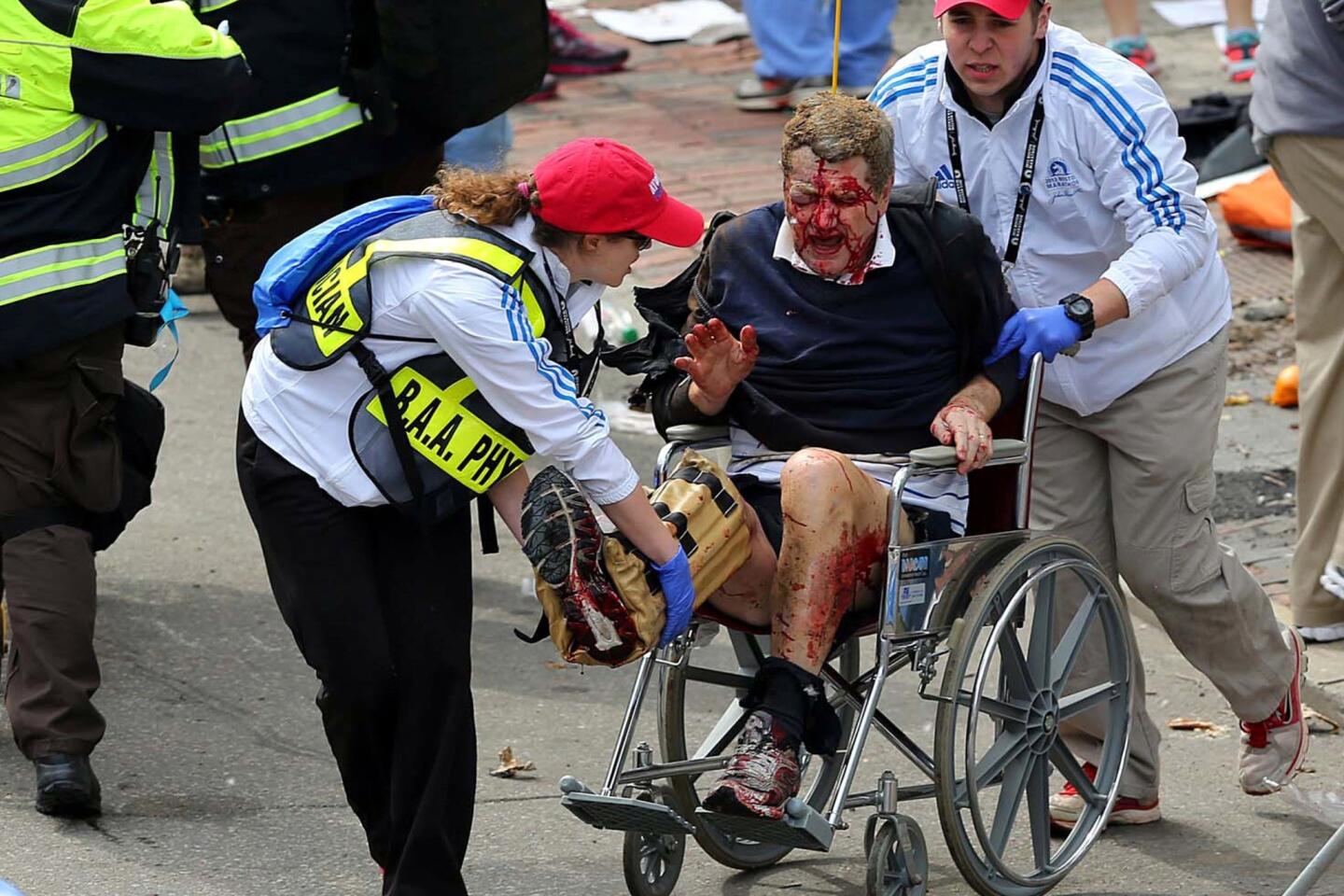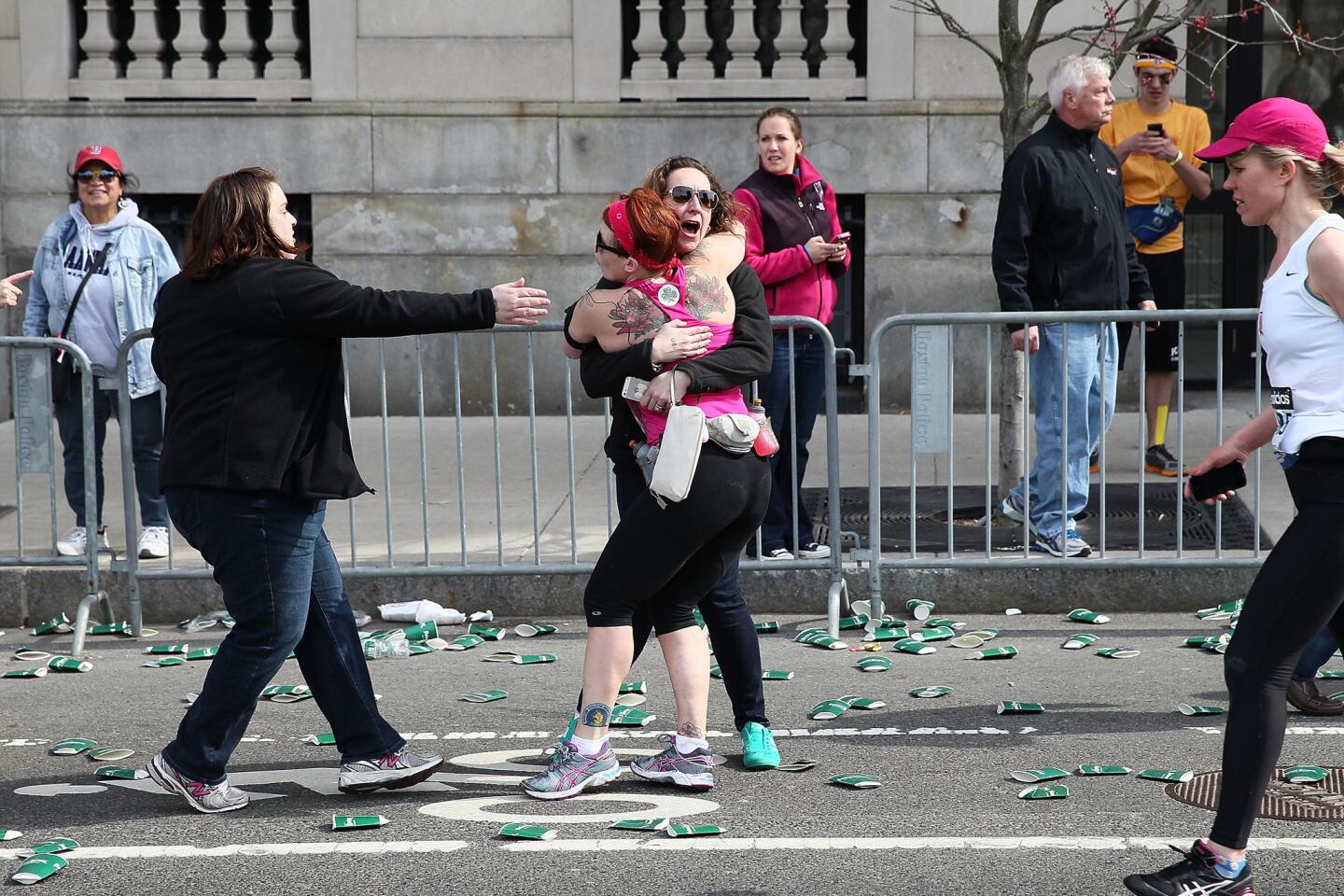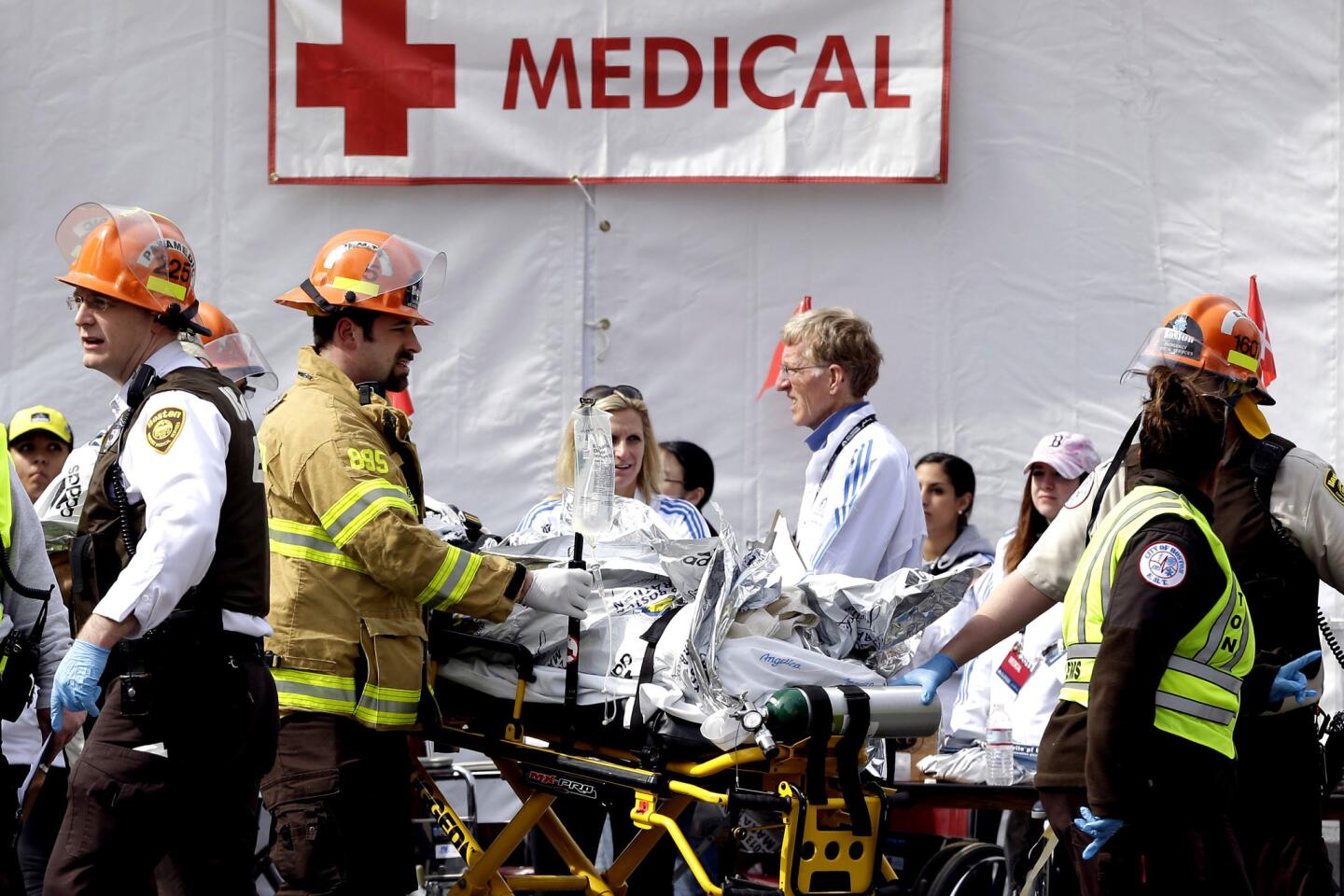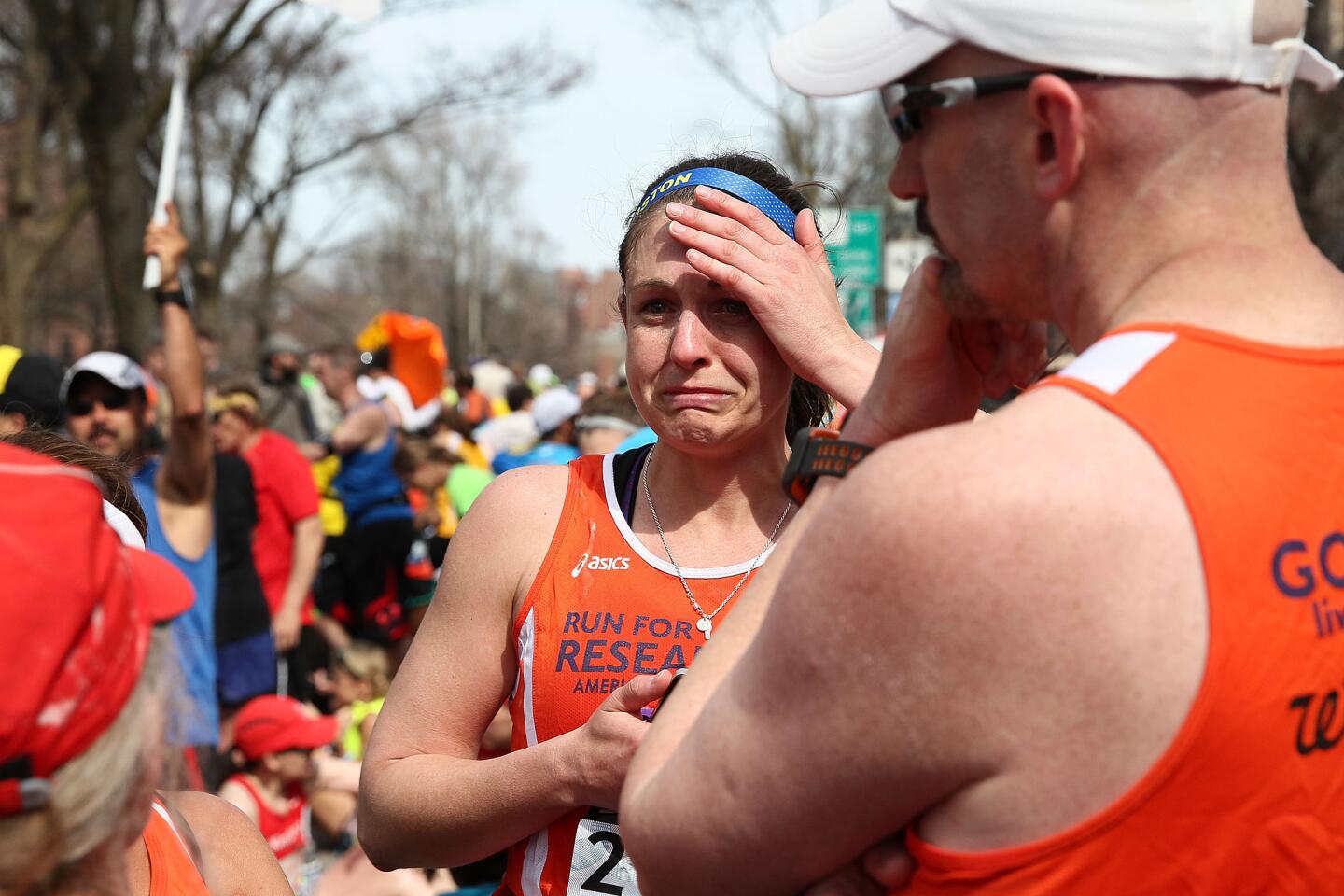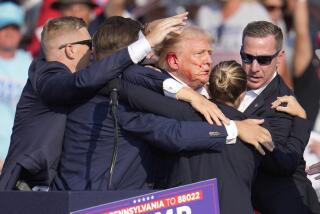Boston Marathon bombing report questions police tactics during chaotic manhunt
A report analyzing the response to the 2013 Boston Marathon bombings largely praised first responders and paramedics for life-saving measures taken at the site of the explosions, but also raised questions about decisions made by police officers during the chaotic manhunt for the Tsarnaev brothers.
The Massachusetts Emergency Management Agency published the 129-page report Friday, providing an in-depth look at the decisions made by city leaders, federal and local law enforcement and emergency management personnel in the week after the explosion.
While the report referred to the overall response as a âgreat success,â portions of the document questioned police actions in Watertown, Mass., during a firefight with Dzhokhar and Tamerlan Tsarnaev and the subsequent pursuit of the surviving brother.
Specifically, the report criticized the actions of officers who arrived near the tail end of a shootout with the Tsarnaev brothers in Watertown, Mass., on the morning of April 18. Police converged on Watertown after the brothers shot and killed Massachusetts Institute of Technology Police Officer Sean Collier and carjacked a vehicle.
While officers initially exercised proper weapons discipline, police arriving late on the scene began to fire without taking proper aim, the report said. Officers standing on opposite sides of the street also shot at Dzhokhar Tsarnaev as he fled the scene, creating a possible crossfire situation.
An incorrect report that Dzhokhar had stolen an unmarked Massachusetts State Police truck also led to a near tragedy, as officers fired on the vehicle moments later. A Massachusetts state trooper and a Boston police officer were inside, though they were not hurt.
The report also criticized an unidentified officerâs decision to shoot in Dzhokharâs direction during a standoff on the evening of April 19, while the bombing suspect was hiding in a boat behind a house.
The officerâs unauthorized decision to fire caused several other officers, who believed Dzhokhar was shooting at them, to open fire as well, creating âdangerous crossfire situations,â the report said.
Response tactics on the day of the bombings, however, were met with high praise. While dozens suffered critical injuries on Boylston Street near the finish line, emergency personnel were able to take them all to a hospital in under 50 minutes, the report said.
State emergency officials credited preexisting relationships between state, local and federal law enforcement agencies, and staff at a marathon medical tent that wound up functioning as a field hospital near the finish line, with saving several lives.
The report also lauded the cityâs decision to ramp up security at area hospitals and other critical locations, in the event the bombings were part of a larger attack, and the swift disposal of 61 other âsuspicious packagesâ near the bombing scene.
Dzhokhar Tsarnaev remains on trial in Boston, where federal prosecutors are seeking to have him executed for his role in the bombings. Defense lawyers rested their case on Tuesday, and a verdict could come as early as next week.
Follow @JamesQueallyLAT for breaking news
More to Read
Sign up for Essential California
The most important California stories and recommendations in your inbox every morning.
You may occasionally receive promotional content from the Los Angeles Times.

